Where to Go Mushroom Hunting Near Me: A Friendly Guide
Mushroom hunting is an exciting and rewarding pastime that combines a love for nature with the thrill of discovery. Not only do you get to spend time outdoors, but you’ll also have the chance to enjoy the fruits of your foraging labor. For those new to mushroom hunting, it’s essential to know where to look for these elusive fungi, especially if you’re searching for choice varieties like morels.
One aspect that makes mushroom hunting so fun is the multitude of places to search. From national parks and forests to local nature preserves, opportunities for foraging are abundant around you. When starting your hunt, be sure to brush up on local foraging regulations and identify safe, edible mushrooms. As you explore and develop your skills, you’ll soon become an expert in finding mushrooms in your area. Remember, patience and a keen eye are key to a successful mushroom hunt. Good luck and happy foraging!
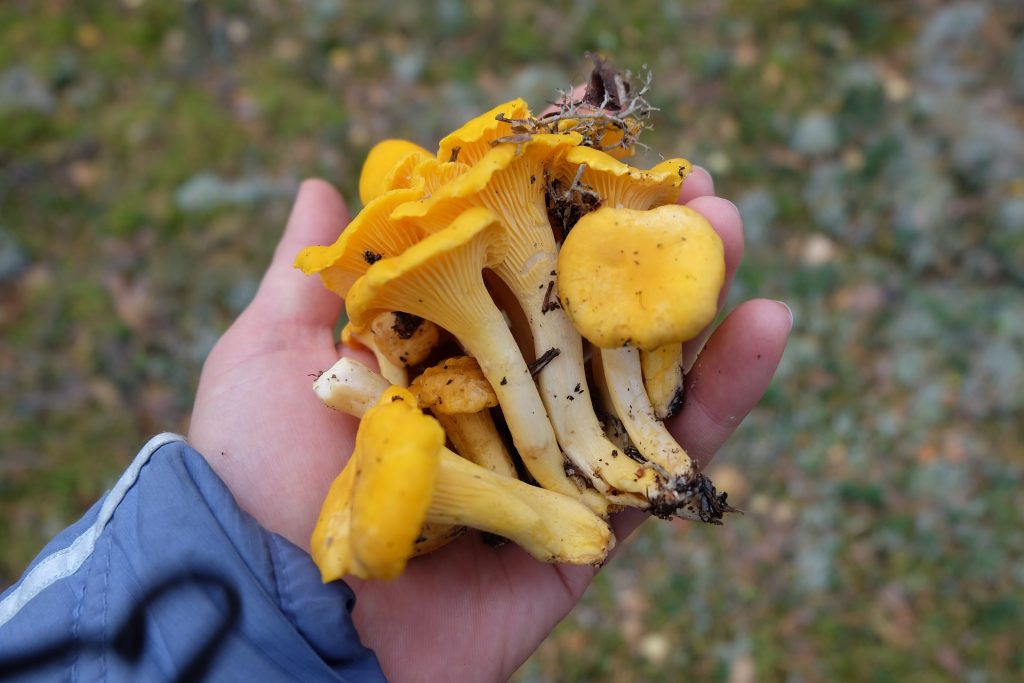

The Basics of Mushroom Hunting
Mushroom hunting can be a fun and rewarding outdoor activity if you know what you’re doing. This friendly guide will help you get started with the basics.
Firstly, familiarize yourself with the types of mushrooms in your area. Some common edible mushrooms include morels , chanterelles, and oyster mushrooms. It’s essential to know the differences between edible and poisonous mushrooms, so invest time in researching and learning about the various species.
To ensure your safety, never consume any wild mushroom without being 100% certain of its identification. If you’re unsure, consult an experienced mushroom hunter or a local mycologist. Carry a guidebook or use a reliable app to help with identification.
When searching for mushrooms, wear appropriate clothing and shoes for the outdoor conditions. Remember that some mushrooms might be in damp, muddy areas, so waterproof shoes are a good idea. Bring a knife or scissors to cut the mushroom at the base, a brush to remove dirt, and a basket or breathable bag for collecting.
The ideal time for mushroom hunting is during spring and fall when the weather is damp and mild. Morels, for example, are often found from late March through June. Check your local area’s climate and seasons to pinpoint the best time for your mushroom hunt.
In general, mushrooms prefer areas with moisture and good soil content. Look for them around streams, creeks, and swampy areas even in hot weather . Dense forests with decaying organic matter or near tree trunks can also be productive spots. Be sure to respect private property, always ask for permission if entering private land, and follow any rules and regulations when foraging on public lands.
Lastly, practice sustainable harvesting by only taking a portion of the mushrooms you find, leaving some to continue growing and reproducing. This way, you’ll be able to enjoy mushroom hunting for years to come.
Where to Go Mushroom Hunting Near Me
Mushroom hunting can be a fun and rewarding hobby, especially when you know where to look. In general, forests, state parks, private lands, and public lands can offer a variety of opportunities for foraging. However, always ensure you have permission and follow any rules or regulations when accessing these areas.
In the Pacific Northwest, forests like the Olympic Peninsula and areas north of Seattle are great places to start. The region is famous for its diversity of fungi, and you can discover many edible mushrooms here like chicken-of-the-woods. Additionally, southern cascades and eastern Washington also offer plenty of mushroom hunting opportunities.
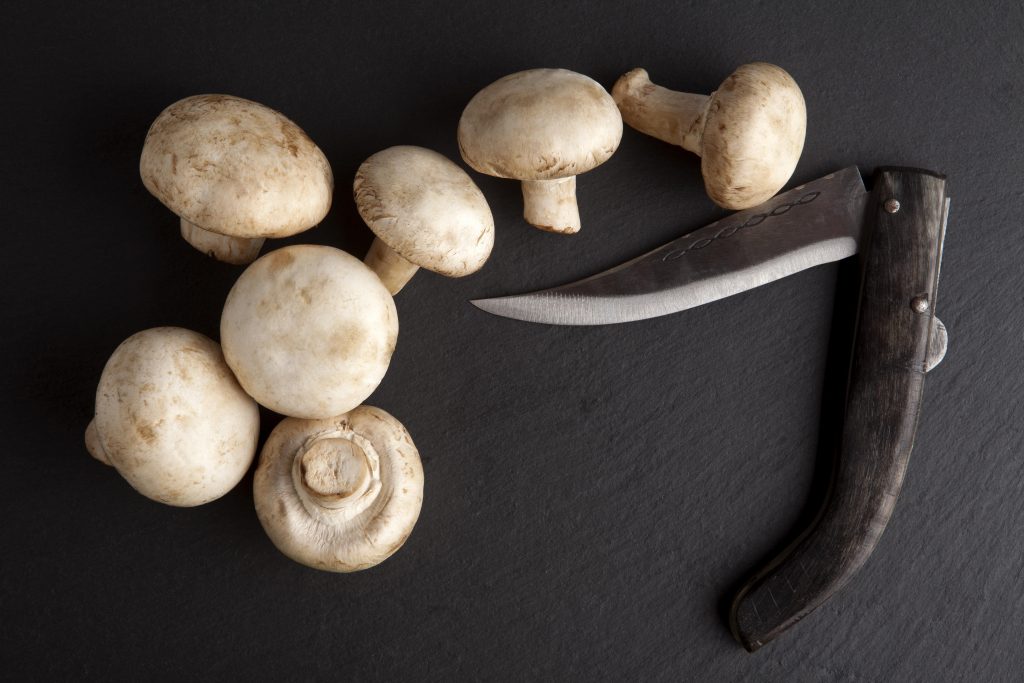
Moving east, Indiana hosts expansive public forests, perfect for foraging. Don’t be afraid to explore local forest trails, as they can often lead you to patches of delicious mushrooms. Make sure to familiarize yourself with the local species and follow all state park guidelines.
In New York, you can try your luck in the state parks scattered throughout the region. The variety of forests and landscapes provide a vast range of mushroom species to find. Just remember to pack your basket, knife, and identification resources to help you safely gather nature’s bounty.
Don’t forget that mushrooms can also grow right in your own yard! If you have wooded or shaded areas on your property, you might be surprised to find a few tasty species growing near you. Be extra cautious with your identifications, and never consume any mushrooms you’re unsure about.
To enhance your foraging experience, consider joining a local foraging group or sign up for a mushroom hunting tour . These guided outings will provide you with valuable knowledge, tips, and safety precautions to make your mushroom hunting adventures successful and enjoyable. Happy foraging!
Best Time for Mushroom Hunting
Finding the perfect time for mushroom hunting can improve your chances of success and make your experience more enjoyable. In general, morel mushrooms appear during the spring months when the weather conditions are favorable. Don’t worry! Here’s some information to help guide you on when to go, the ideal seasons, and the best conditions for mushroom hunting.
It’s important to consider the seasons and weather when planning your mushroom hunting adventure. Morels typically emerge during early spring, when daytime temperatures are in the 70s and nighttime lows are in the 50s . Keep an eye on the forecast and plan your trip around days with these ideal temperatures.
Another factor to consider is the soil temperature. Morel mushrooms need a ground temperature of around 50 degrees at four to six inches below the surface to thrive. This usually occurs in mid to late April, but they can also be found earlier or later, depending on the weather.
Rain can also play a significant role in determining when mushrooms will sprout. Mushroom growth is stimulated by moisture, so regularly checking weather updates and heading out after a rainfall can increase your chances of finding mushrooms.
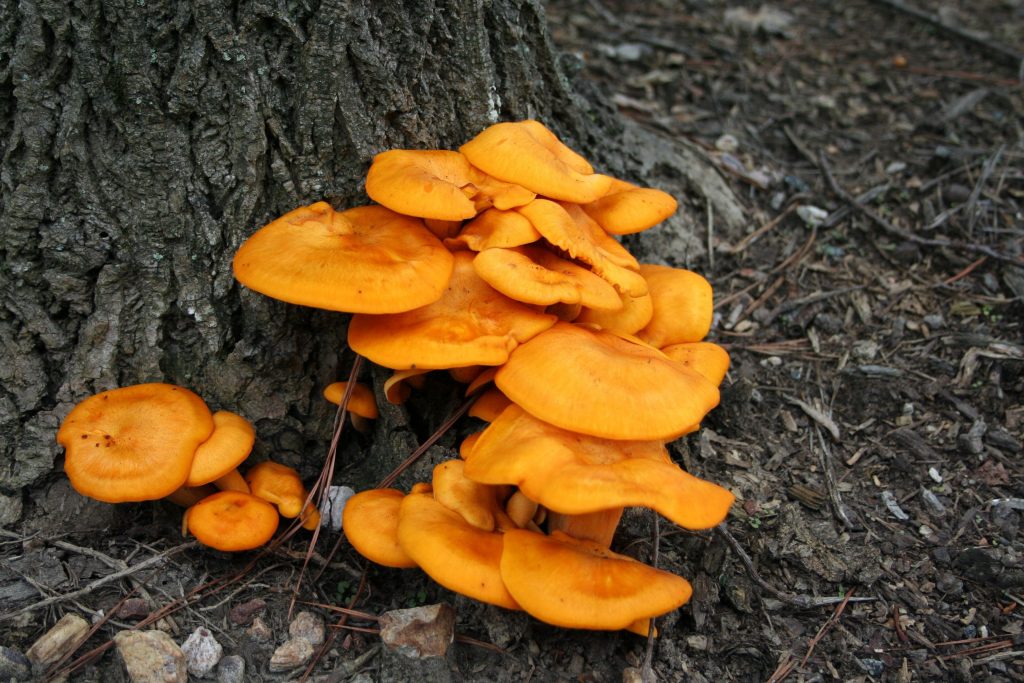
Sunlight is another essential factor to keep in mind while planning your hunt. Morel mushrooms tend to grow first on south-facing slopes and areas with fewer trees , where the soil warms up more quickly due to increased sunlight exposure.
Keep these factors in mind, and be flexible with your plans. Good luck, and happy mushroom hunting!
Mushroom Species and Habitats
When you go mushroom hunting, it’s essential to familiarize yourself with the different species and their habitats. Here’s a brief overview of some popular mushrooms and where to find them.
Morels are highly sought-after mushrooms, known for their distinctive, honeycombed appearance and delicious taste. You can often find these fungi on south-facing slopes that receive the most sunlight, early in the mushroom hunting season. As the season progresses, expand your search to include north-facing slopes as well.
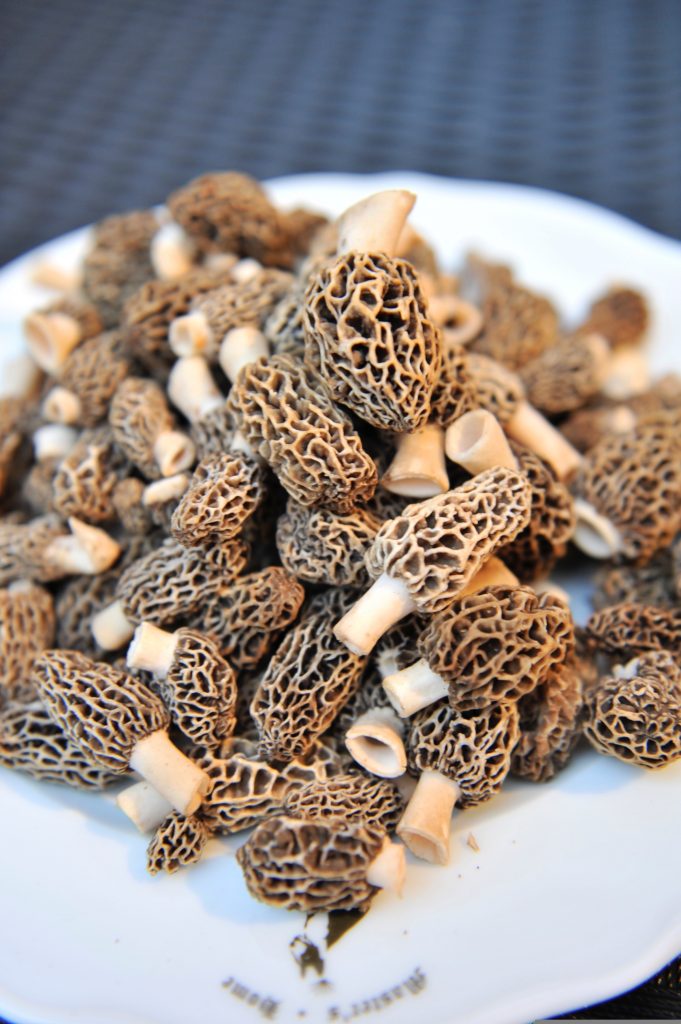
Chanterelles are another popular choice for foragers, with their trumpet-shaped caps and vibrant colors ranging from yellow to orange. Keep an eye open for these mushrooms in the hardwood and coniferous forests, particularly in areas with a lot of moisture and leaf litter on the ground. They tend to prefer mild, wet environments during the summer and fall months.
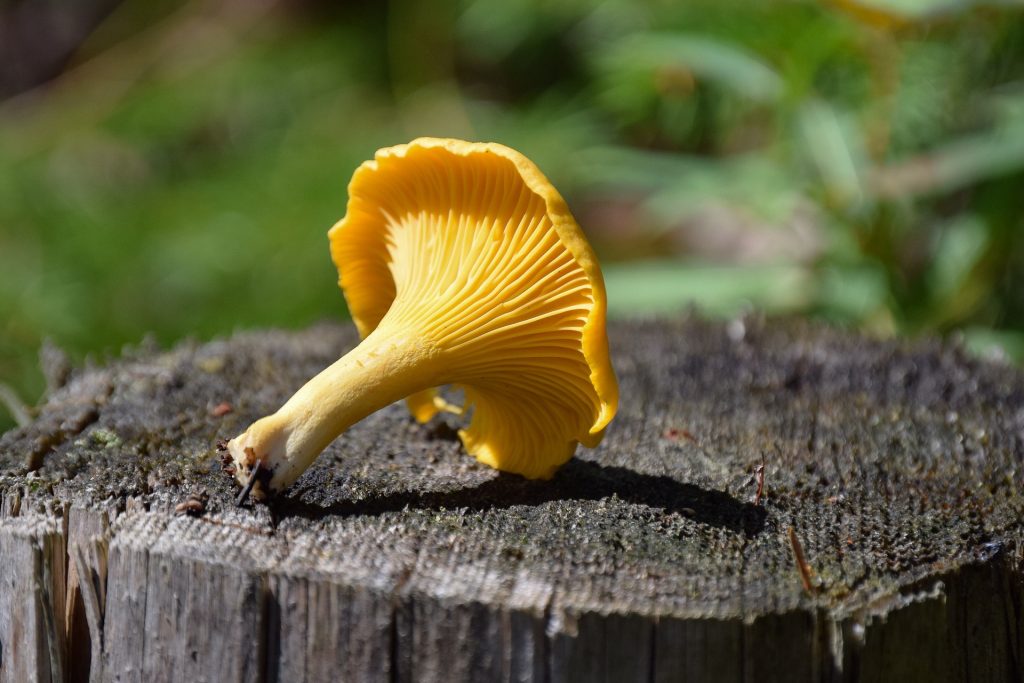
Shaggy mane mushrooms get their name from the shaggy, white appearance of the caps. These interesting fungi are easy to spot because of their unique look. You have a better chance of finding them in lawns, urban areas, and on the side of roads during fall and spring.
While seeking these specific mushrooms, remember that not just morels, chanterelles, and shaggy manes are out there. There’s a whole world of psilocybin mushrooms too. While some grow deep in the forest, others can grow in cattle pastures in places like Texas and east towards humid central Florida.
Always remember to use a friendly and cautious approach when mushroom hunting, as many species look similar and edible ones might be easily confused with their toxic counterparts. Happy foraging!
Foraging Strategies and Tips
Mushroom hunting can be a rewarding outdoor activity, especially when you know the best places and strategies to find them. With some basic knowledge of foraging techniques, you can increase your chances of finding a variety of mushrooms in your area.
When starting your foraging adventure, it’s essential to choose the right trail. Look for trails near river bottoms, as the moist and damp environment can create ideal conditions for mushrooms to grow. River bottoms also provide diverse vegetation, which may support different mushroom species.
South-facing slopes are another great location to explore. These areas often receive more sunlight, allowing the ground to warm up faster in the early spring months, promoting mushroom growth. Plus, the incline keeps the soil relatively well-drained, providing a good balance of moisture for fungi to thrive.
Don’t overlook burn areas from recent wildfires. Morel mushrooms, in particular, are known to flourish in these environments, as they take advantage of the cleared understory and the nutrients released by the fire. Make sure you are aware of any regulations and safety measures before venturing into such locations.
While hiking, pay close attention to the vegetation. Mushrooms often form symbiotic relationships with specific plant species, so familiarizing yourself with the local flora may guide you to fruitful hunting grounds. For instance, chanterelle mushrooms are commonly found near oak, hemlock, and beech trees.
Here are some foraging tips for a successful mushroom hunt:
- Safety first: Always positively identify mushrooms before consuming them, as some may be toxic. Reach out to foraging groups or resources to improve your knowledge, but if uncertain, it’s better to leave them untouched.
- Respect your environment: Practice ethical foraging by not over-harvesting and by being mindful of the ecosystem you’re exploring.
- Timing is crucial: Plan your hunt after periods of rain and when temperatures are suitable for mushroom growth, usually early morning or late afternoon.
With these strategies in mind, you’ll be well-prepared for a successful mushroom hunting experience. So, grab your hiking boots, some comfortable clothes, and enjoy your time reconnecting with nature. Happy foraging!
Guides and Resources
If you’re looking to go mushroom hunting, having the proper guides and resources is essential for a successful and safe experience. There are a variety of options available to help you learn more about foraging for mushrooms.
A great starting point is to find a reputable guidebook or field guide specifically tailored to your region. These books typically provide valuable information on the types of mushrooms you can expect to find, as well as tips for identifying and safely harvesting them. You can purchase guidebooks online or in bookstores specializing in outdoor activities.
Taking a class is another excellent way to learn more about mushroom hunting. Many organizations and experts offer classes, both online and in person, that can teach you how to safely identify wild edible mushrooms. For example, the Mushroom Hunting Foundation offers guided mushroom walks and hands-on experience. They can even recommend a location or join you on familiar paths, ensuring you’re learning in a comfortable environment.
If you’re looking for a unique gift idea or want to treat yourself, consider getting gift certificates for mushroom hunting classes. These can be purchased through organizations or individual experts offering the classes.
As you continue your mushroom hunting journey, don’t hesitate to reach out to experienced foragers, either through email , call , or contact forms on their websites. Many experts are more than happy to share their knowledge and tips with enthusiastic beginners.
In summary, investing in a guidebook or field guide, taking a class, and connecting with experienced foragers can all significantly improve your mushroom hunting skills. With these resources, you’ll soon be on your way to uncovering the fascinating world of wild mushrooms.
Tips for a Successful and Safe Hunt
Finding the perfect spot for mushroom hunting can bring a sense of excitement and adventure. To help you maximize your experience, here are some friendly tips for a successful and safe hunt.
First and foremost, remember that safety is essential. Always carry essential items such as bug spray, mosquito and tick repellent, a knife, a flashlight, sunscreen, and water during your hunt. It’s also important to wear appropriate shoes for the terrain you’ll be exploring, as mushroom hunting usually takes place in the woods 1 .
Next, be aware of the different seasons for mushroom hunting. For morel mushrooms, the season usually lasts from late March through June 2 . Keeping an eye on the changing seasons and local weather conditions can help you determine the best time to find your favorite mushrooms.
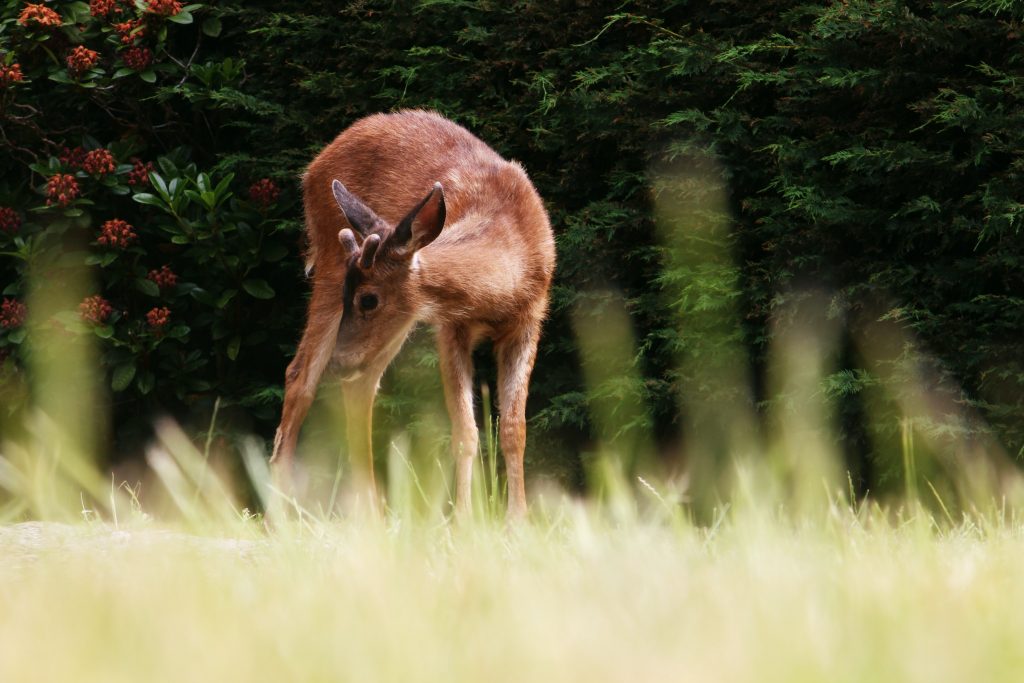
When searching for mushrooms, pay attention to the types of trees around you, as they can often provide clues on where mushrooms may be found. For instance, in the West, cottonwoods in river bottoms and aspen stands are good places to start your search for morel mushrooms 2 . Additionally, some mushroom hunters associate the blooming of lilacs with the arrival of morels 1 .
Finally, it’s essential to know which mushrooms are safe to consume. Familiarize yourself with local mushrooms and, if possible, consult an experienced mushroom hunter or a mycologist in your area. Be extra cautious when picking mushrooms, as certain toxic species can resemble edible ones. Carrying a mushroom field guide or using a mobile app for mushroom identification can also aid in your foraging efforts.
By following these friendly tips, you can expect an enjoyable and fruitful mushroom hunting adventure. Happy foraging!
- https://tinylivinglife.com/8-mushroom-hunting-tips-for-a-successful-harvest-from-an-experienced-mycophile/
- https://www.onxmaps.com/hunt/blog/morel-mushroom-hunting-maps-where-to-find
Frequently Asked Questions
What are the top mushroom hunting spots in ohio.
Ohio is home to several well-known mushroom hunting locations. Hocking Hills State Park and Cuyahoga Valley National Park are popular spots for finding a variety of mushroom species. Make sure to familiarize yourself with local regulations and stay on designated trails while foraging.
Where can I find morels in Indiana this year?
Morels tend to grow in wooded areas, especially near dying or dead trees like elms and ashes. Pay close attention to the ground around these trees as you explore Indiana’s forests during the springtime. Keep in mind that weather conditions such as rainfall and temperature can impact morel growth, making their appearance more unpredictable.
Which locations are famous for mushroom hunting in Michigan?
Northern Michigan boasts prime mushroom hunting territory. Manistee National Forest, Pictured Rocks National Lakeshore, and Sleeping Bear Dunes National Lakeshore are some of the top spots. Remember to study local mushroom species and regulations before venturing out on your foraging adventure!
What is the morel mushroom map for 2023?
A morel mushroom map isn’t available yet for 2023, as morel sightings vary each year. However, you can usually find morel maps from previous years online. These maps are updated regularly by fellow foragers and can give you some general ideas of where to start looking.
Are there any mushroom hunting clubs I can join nearby?
Mushroom hunting clubs indeed exist! In the United States, consider checking out Eat The Planet’s list of foraging tours, classes, and groups to find a club in your area. Joining a mushroom hunting club helps you gain access to knowledgeable community members and learn valuable foraging skills.
Where to look for mushrooms in states like Oregon and Wisconsin?
Oregon’s temperate rainforests, as well as Wisconsin’s diverse woodland areas, offer prime opportunities for mushroom hunting. In Oregon, the Mount Hood National Forest and the Willamette Valley are popular spots. In Wisconsin, consider visiting the northern hardwood forests or the Kettle Moraine State Forest. As always, familiarize yourself with local regulations and practice sustainable foraging practices!
Related Articles

Mushroom Season Chart: A Guide to Finding the Best Mushroom Picking Times

Best Places to Mushroom Hunt Near Me: Top Picks for Fungi Foragers
- Skip to main content
- Skip to footer
Additional menu

Homesteading & Sustainability

Mushroom Hunting: A Helpful Guide For Beginners
Author: Andrea Bertoli // Last updated on September 5, 2023 4 Comments
Hunting or foraging for wild mushrooms can be a very rewarding experience, but knowing which mushrooms are edible is a key skill to have before heading out into the woods.
In this guide, we’ll share the best tips and tricks for edible mushroom hunting, discuss the best mushrooms available for foraging in different regions of the US and share some incredible recipes to make the most of your bounty.
Mushroom Hunting Basics
I went on a foraging walk with Forage SF last year, and our guide explained that when it comes to mushrooms, you need to be 200% sure about what you’re harvesting before even thinking about eating it. While the same is true for plant foraging too, it’s perhaps even more important for mushrooms since there are lots of mushroom lookalikes that can be dangerous. If you’re not an experienced forager yourself, be sure to mushroom hunt with an experienced guide.
Learning which mushrooms grow in your region, and in which season, can make your mushroom hunting more productive and safer. And don’t forget to have patience! Mushrooms are sometimes fickle little creatures, and most mushroom foragers will tell you that some days you find a bounty, and other days you come home empty-handed.
Tools For Foraging Mushrooms
If you’re getting ready to hunt mushrooms you need few good tools to help you along the way. First and foremost, unless you’re an expert mushroom forager, you’ll need a detailed mushroom field guide for your region. Be sure to review it before you head out, and then double and triple check before harvesting anything from the forest.
Some other tools you’ll find helpful along the way:
- Notebook and pen for taking notes
- A magnifying glass (to pair with your field guide to determine the details of a particular specimen)
- A good knife, scissors, or a special mushroom cutting knife
- A large basket to carry your harvest out of the forest and a backpack to carry all your gear
- A light or headlamp
- Waterproof clothing and boots
- A local, regional, or park map and/or GPS to help you find your way home after adventures further afield
Mushroom Hunting.com also recommends wax or paper bags to keep any specimens you are not sure about separate; if you can’t see all the details of the mushroom while out in the forest, you can take a better look once you’re at home to confirm safety. To further understand your specimens, The Spruce suggests both black and white paper to test spore patterns, which can help confirm identity of any questionable fungi.
What Types of Mushrooms Can You Forage?
There are hundreds of mushroom varieties that grow around the US in various timeframes, geographies, and weather patterns, but here are some of the most common mushrooms hunted in the US.
Lion’s Mane

This gorgeous fungi is unlike any idea of mushroom you might have seen. It is bright white, and almost fluffy looking – making it a ‘fool-proof’ mushroom, according to The Mushroom Forager. This mushroom, also called pom-pom mushroom, is in the family Hericium , all of which are edible – though some are more delicious than others.
Wild Foodism explains that this mushroom, “is one of the most delectable mushrooms in the fungal kingdom, resembling crab meat in taste and texture.” They also write that like many wild mushrooms, Lion’s Mane has been found to improve cognitive function and can be neuro-regenerative.
Lion’s Mane fruits in the spring through summer and into fall, almost always on dead or dying hardwood – but this species also takes well to cultivation in sawdust and on logs at home.
Chanterelles
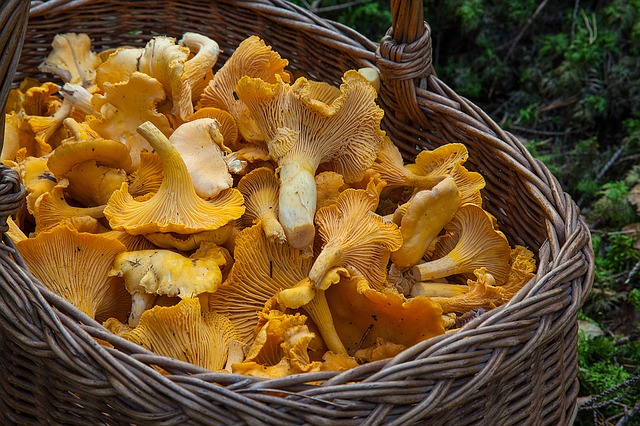
The golden, beautiful mushrooms known as chanterelles ( Cantharellus cibarius ) are highly regarded in the mushroom community and among chefs. WildEdible says that these mushrooms can range in color (yellow to deep orange), flavor (mildly peppery with a distinct fruity apricot-like aroma), and in size (as large as 5 inches in diameter, but 2 inches is closer to average).
Like other mushrooms, chanterelles are often found in late spring through late summer or early fall in the Eastern United States, but fall and winter in California . These mushrooms seem to like hardwoods like maple, poplar, white oaks, pines, birch, hemlock, and bay, and they like slightly damp areas, so are good to find after a rain.
According to multiple sources, chanterelles are often prone to bug damage, so be sure to inspect and clean your fungi prior to cooking lest you enjoy some extra critters with your mushrooms.

Field & Stream calls morels ‘America’s mushroom’ since they are so widespread, easy to identify, and so very delicious to eat. They are fairly distinct looking, and so are often considered a safer option for beginning foragers. F & S explains that the morels like to live on the edge of forested areas, especially around trees like ash, aspen, elm, and oak trees—and especially around dead trees.
Related Post: Morel Mushroom Hunting
The season for morels is spring (with temperatures between 60ºF during the day and 40ºF at night). Later in the season, you can find them deeper in the forest. They tend to like loamy soil, like that of a creek bed, and they especially like burn sites or disturbed ground.
Maitake Mushrooms
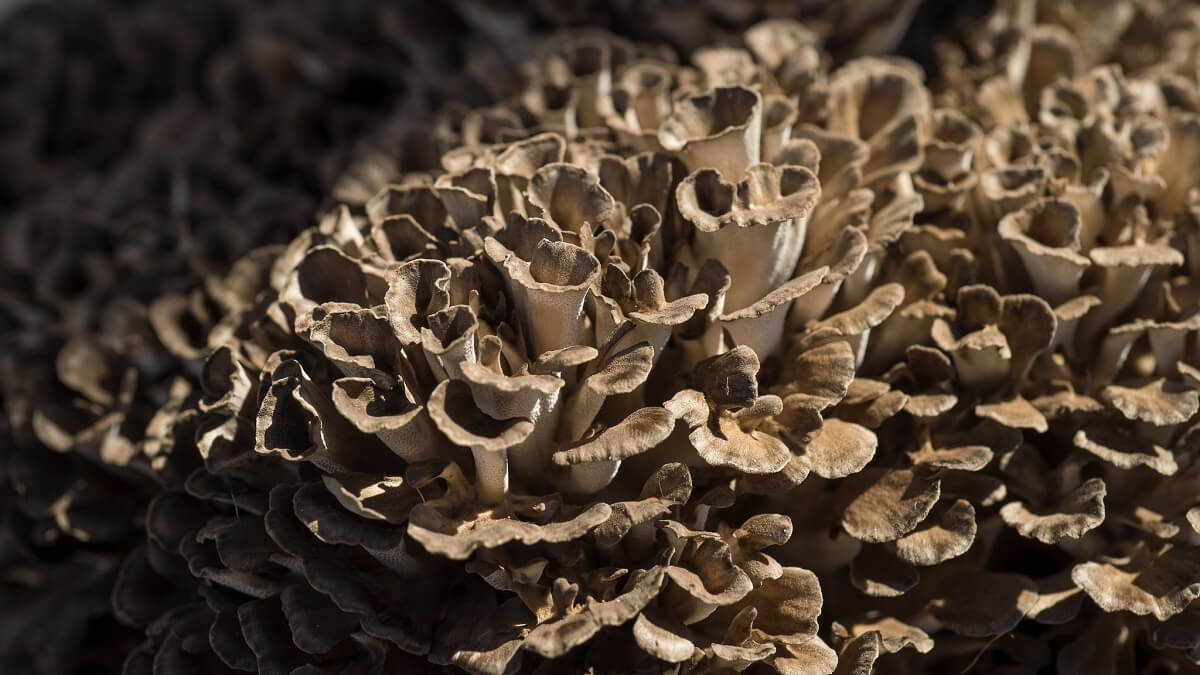
Maitake ( Grifola frondosa ) are truly wild-looking mushrooms. These are also known as hen of the woods (since it looks like a fluffing chicken) or ram’s or sheep’s head. Paul Stamets , the renowned mushroom hunting expert, explains that maitake mushrooms are “particularly fond of oaks, elms, and rarely maples,” and that they feed on dead roots of aging trees.
That means these mushrooms bunches are found at the base of trees. Also like some other mushrooms, maitakes have some great nutritional benefits, including immune-boosting compounds.
Porcini Mushrooms
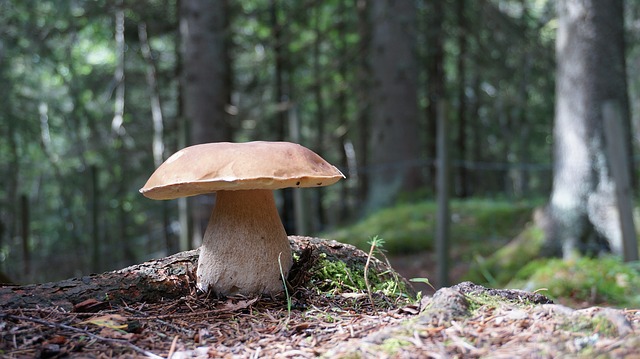
Porcini grow across Europe and North America and is nearly impossible to cultivate, so if you’ve eaten porcini mushrooms, they are most likely wild and foraged! It’s famous not only for its flavor but also for its unique structure–unlike other mushrooms with gills, the porcini is actually quite spongy on the underside. These mushrooms can be found in hardwood forests near pine, chestnut, hemlock, and spruce in the summer and into fall.
Related Post: Winter Foraging: 20+ Edible Greens, Nuts, Seeds, and Fruits to Forage For in Cold Weather
Like chanterelles, they are often home to bugs like maggots or worms, so check them and wash if needed. Porcini mushrooms ( Boletus edulis) are often found dried in gourmet stores and are a great addition to most meals, since their meaty, nutty, or umami flavor lends itself well to most meals.
Vegetarian Recipes for Wild Mushrooms
Now that you know which types of mushrooms to look for in the forests and fields, now you can learn how to cook them. All wild mushrooms taste incredible in a butter or olive oil saute—this preparation allows the various nutty, earthy, meaty flavors to come through. They can be eaten plain, or tossed with pasta, risotto, or polenta. But if you want to take your mushroom recipes to the next level, below are some wild mushroom recipes that you might enjoy.
Lion’s Mane Mushroom Recipes
- Lion’s Mane ‘ ‘Liver’ and Onions Recipe from One Green Planet
- Lion’s Mane Mushroom Tacos from Vegan ESP
- Lion’s Mane ‘Crab Cakes’ from Asheville Fungi
Maitake Recipes
- Roasted Maitake (Hen of the Woods) from PBS Food
- Gnocchi with Fresh Maitake from Blue Apron
Morel Recipes
- Pan-fried Morels from The Great Morel
- Stuffed Spring Morels from TreeHugger
- Heidi Swanson’s Saké Mushrooms (any variety)
Chanterelle Recipes
- White Wine & Garlic Chanterelles from Isa Chandra Moskowitz
- Chanterelle Cream Soup from My New Roots
Porcini Mushroom Recipes
- Heidi Swanson’s Porcini Mushroom Fettuccine
- Learn how to grill, roast, and dry porcinis from Crazy About Mushrooms
- Spring Grilled Porcini from Hunter, Angler, Gardener, Cook
Further Resources For Mushroom Hunting & Foraging
North American Mycological Association is dedicated to the promotion of scientific and educational activities related to fungi, supports the protection of natural areas and their biological integrity, and advocates the sustainable use of mushrooms as a resource and endorse the responsible mushroom hunting and collecting that does not harm the fungi or their habitats. Here are a few more mushroom hunting resources we recommend:
- Paul Stamets is a world-renowned mushroom hunting expert and has written many books on the subject. Read more about his work and his books .
- Poisonous mushrooms to avoid from AmericanMushrooms.com
- Wild Foodism, Easy to Identify Edible Mushrooms for the Beginning Mushroom Hunter
- Book: Mushrooms and Other Fungi of the MidContinental United States
- Book: E dible Wild Mushrooms of North America: A Field-to-kitchen Guide
About Andrea Bertoli
Andrea is a marketing and media professional focused on mission-driven businesses. She currently manages sales at CleanTechnica, the world’s largest cleantech news website. She has worked at startups, in small businesses, and as a freelancer, and brings years of marketing, event management, and community outreach skills to our team. She’s also a plant-based chef, author, and educator, and teaches monthly cooking classes, manages a wellness website, and is always in the kitchen making delicious foods – which you can peek on.
Join The Free Insteading Community
We’re building a place for homesteaders to connect, share what works, and grow their skills. In the Insteading community you’ll find:
- 🖥 Ad-free versions of some of our best blog content
- ⏯ Ad-free versions of our Youtube videos
- 🐓 Our complete 3-hour video course, The Beginner's Guide to Raising Chickens
- 🙋♀️ Weekly polls & questions to engage with other members of the community
- 🌟 Q & A’s with other homesteaders, gardeners, & industry experts
- 🌳 Lots of specific topics and groups to join
- 🪴 A fun place to engage with others who have the same interests as you
Ready to get started?
Reader interactions.
August 22, 2017 at 6:46 am
Really Nice Post… http://www.global-technical-support.co.uk/norton-support/
September 2, 2017 at 7:02 pm
Mushroom hunting is something I wish I’d learned from my grandfather before he passed away. I’m a big mushroom fan and would love to be confident enough to head out on a foraging expedition.
September 18, 2019 at 7:25 pm
The mushroom in the photograph depicting a morel is a false morel. It appears to have folds and not pits.
September 19, 2019 at 9:33 am
Good eye! Thanks for spotting that and letting us know. I updated the image.
Leave a Reply Cancel reply
Your email address will not be published. Required fields are marked *
Upload a photo / attachment to this comment (PNG, JPG, GIF - 6 MB Max File Size): (Allowed file types: jpg, gif, png , maximum file size: 6MB.
Keep Browsing:

How to Start a Compost Business (and Why)
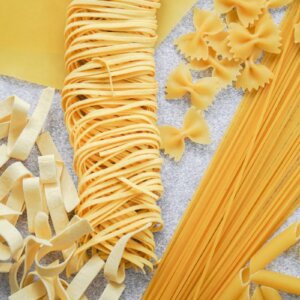
Can I Compost Pasta?
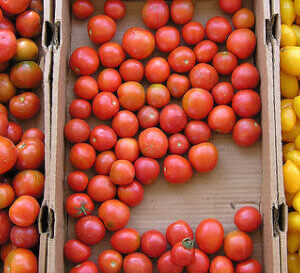
Know Your Vegetable Seeds: The Lowdown on Heirloom, Hybrid, and Organic Seeds
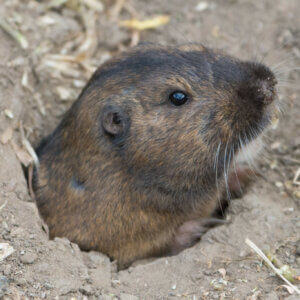
Rodent Control Without Poison
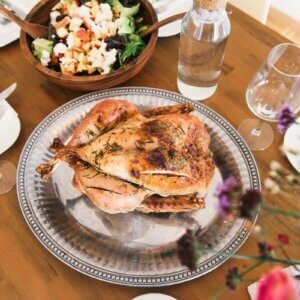
20+ Delectable Pioneer Woman Recipes

Want To Create American Jobs? Eat Local Food.
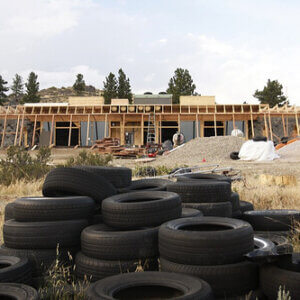
Building with Tires for Energy Efficiency and Disaster Resistance
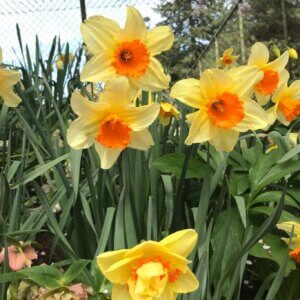
Homestead Stories: Forcing Indoor Flowering Bulbs
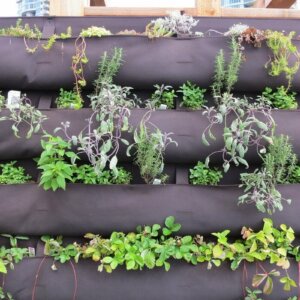
Vertical Herb Garden: What Is It, DIY Plans, And Photos
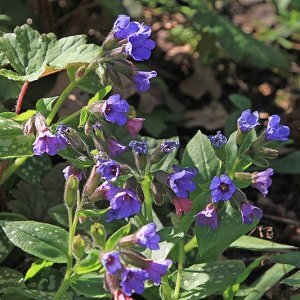
Homestead Stories: The Story Behind Lungwort

This Tiny, Off Grid Cabin Was Built for Just $300

The Basics Of Cordwood Construction
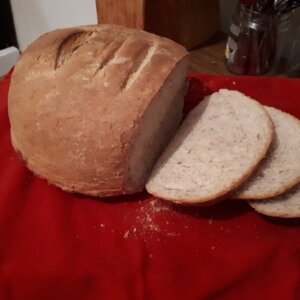
How To Make Sourdough

Farmhouse Table Plans
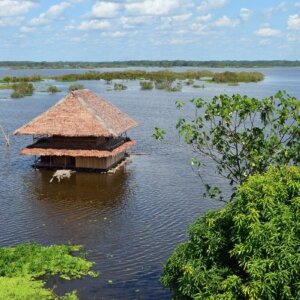
Floating Homes

How Much Water Do People Need to Drink in a Day? (w/ Video)
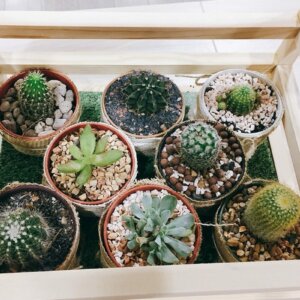
20 Types Of Succulents For Your Desktop Or Rock Garden

Shower Heads
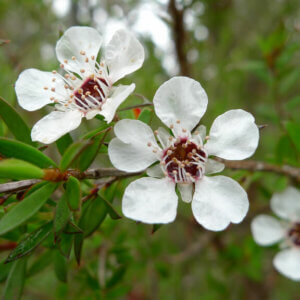
Natural Anti-Fungal

Stinging Nettle: A Medicinal Herb

Fruit Flies Live Longer on an Organic Diet

How To Grow Healthy Aloe Vera
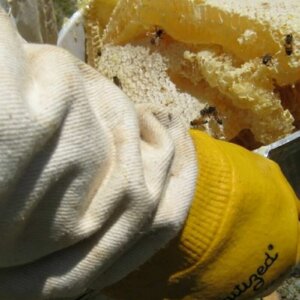
To Catch A Honeybee Swarm
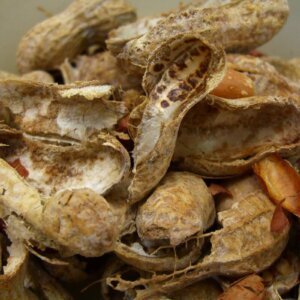
Can I Compost Peanut Shells?

17 Delicious French Macaron Recipes
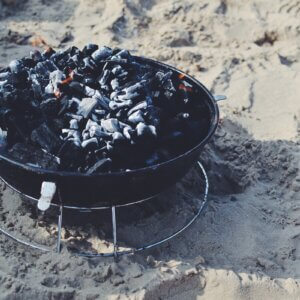
Charcoal Briquettes Made From Coffee Grounds? Yep, That’s A Thing… [Video]

20 DIY Wall Art Ideas To Give Your Home Some Personality

How To Cook Chicken Gizzards

Bee Balms Or Bee Bums?

Flatpack Urban Farm Grows 6.6 Tons of Food in 538 Square Feet
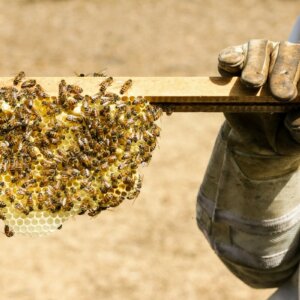
From Hive To Table: How Honey Is Made

This DIY Pool Heater Requires No Electricity

Can I Compost Wine Corks?
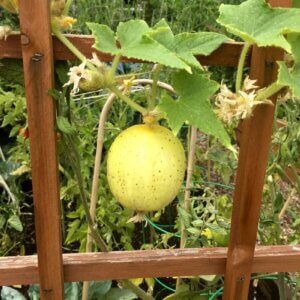
Easy Lemon Cucumber Refrigerator Pickles

21 Facts About Bottled Water, The Environment, & Human Health
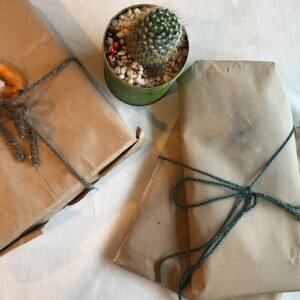
Vegan Gift Guide: 25+ Items For Every Vegan On Your List

In a Plastic World, Recycling Ain’t What It Used to Be
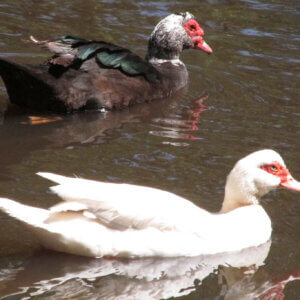
Raising Muscovy Ducks And Why You Probably Want Them

Find local foraging tours, walks, groups and classes in your state (Updated for 2024)
Search united states or canada or united kingdom.
These listings include active local mushroom hunting groups, wild edible foraging walks, wildcrafting herbal classes and more. If you run a program that you think should be included, but isn’t, please contact me at [email protected] .
For Youtube and Online Foraging Tours and Classes follow this link: http://www.eattheplanet.org/foraging-youtubers-and-online-classes-by-region/ .
Leave your email address so you don’t miss any of our wild edibles info! Email Address*
See our privacy policy for more information about ads on this site
Recent Posts
Cardamine concatenata – cut-leaf toothwort, allium tricoccum – ramps, viola sororia – common violets, hosta spp. – hostas, matteuccia struthiopteris – ostrich fern, reynoutria japonica – japanese knotweed, artemisia vulgaris l. – mugwort, alliaria petiolata – garlic mustard, magnolia spp. – magnolia, cardamine impatiens – narrowleaf bittercress.
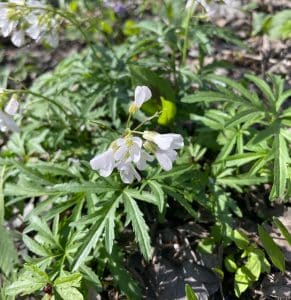
Cut-leaf Toothwort (Cardamine concatenata) is a native, edible ephemeral in the mustard family. Cut-leaf toothwort can be found in hardwood forests with rich soil. They
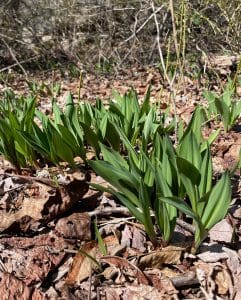
Ramps (Allium tricoccum) are a native species of onion that can be found late March- early May in CT. Ramps can be found in woodlands
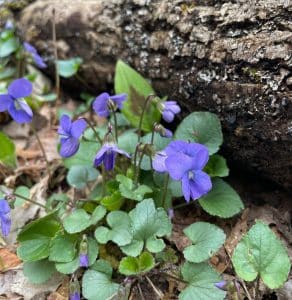
Common Violets (Viola sororia) are a native perennial that produce one of the first spring flowers. Common violets prefer moist soil with partial shade. They

Hostas (Hosta spp.) are a common landscape perennial that thrive in shady woodland conditions. They are commonly eaten in Japan as a “mountain vegetable”. Hostas

The Ostrich fern (Matteuccia struthiopteris) is the only fern in CT that produces edible fiddleheads in the spring. The fiddlehead is the immature, furled frond

Japanese knotweed (Reynoutria japonica) is an invasive perennial that was brought to the U.S. from Asia as an ornamental. Japanese knotweed can be found in
- US Foraging Tours
- Canada Foraging Tours
- UK Foraging Tours
- Privacy Policy
Built with ☕️ by 20k Media .
The Total Guide to Morel Mushroom Hunting
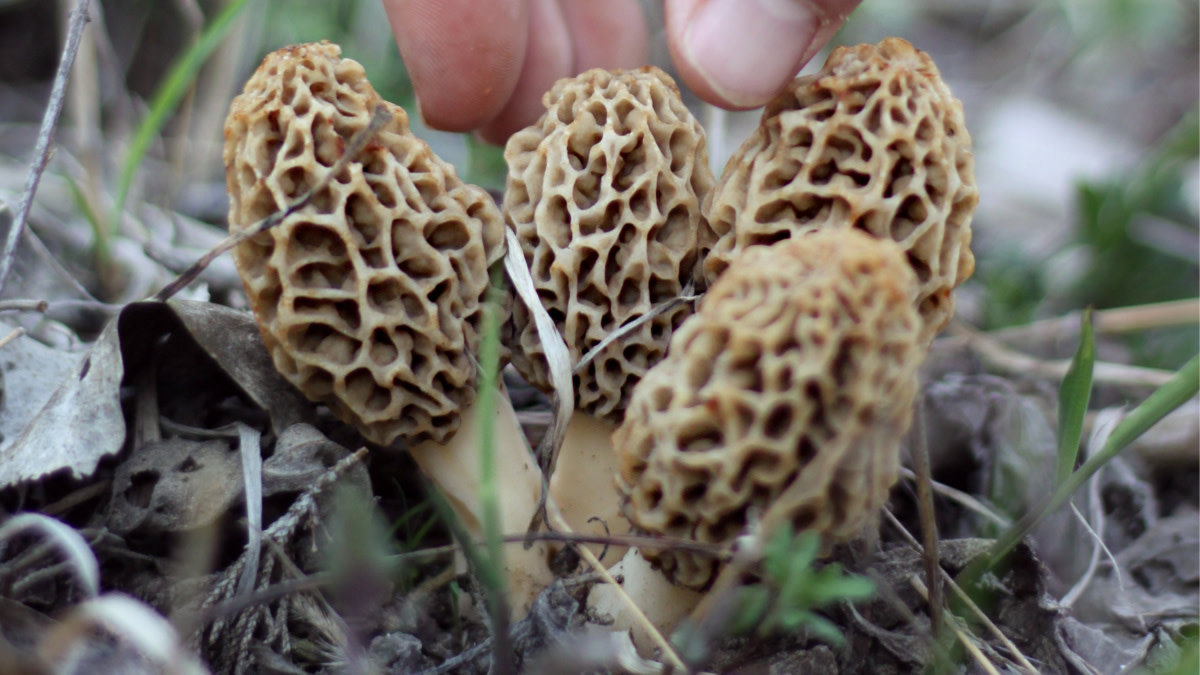
Spring might be the tastiest time of year for sportsmen. Spawning walleye hanging out in shallow water offer firm, white fillets. Turkeys susceptible to sweet-talking hunters provide plump cuts of white and dark flesh. Wild asparagus hiding in rural ditches reward foragers with distinctly-flavored greens.
But perhaps the most valued delicacy this time of year is the morel mushroom. This golden fungus shows up each spring and drives wild food enthusiasts to hike miles in search of the strange-looking and exquisite-tasting treats.
Here’s the when, where and how for finding morels. While this guide includes a bunch of useful info, articles like this can’t possibly tell the whole story. Morels are mysterious organisms that humans don’t understand completely. Our inability to farm them says a lot about the enigmatic nature of morels, and shows why the best way to learn about the fungus is to get out in the field and look for it.
When to Find Morel Mushrooms Morels can be found from March to September, depending on location. For the majority of country, the peak mushroom hunting months are April and May. In a Southern state like Mississippi, morels can be found as early as March. At higher elevations, like those found in Montana, morels might not start showing up until June.
The key to knowing when morels will grow is monitoring soil temperature. They will start to emerge when the soil hits 50 degrees, and disappear around the 60 degree mark. The window where they’re present in a given area can be as short as a few days or as long as a month.
Ideal morel-growing weather includes a bout of rain followed by consistent, mild temperatures. Daytime highs in the 70s and nighttime lows in the 50s will produce a lot of mushrooms. A few days of unseasonably hot or cold weather while morels are present will stunt their growth and make the mushrooms more brittle. If you have solid mushroom weather and see a 20-degree or 90-degree day in the forecast, it’s best to think of that as the mushroom foraging deadline and get out in the woods before it occurs.
If the weather and precipitation seems unpredictable and you’re not sure when morels will start popping, there is some old timer wisdom you can lean on. A great indicator that morels are growing is the presence of dandelions . It’s been said many times that when you see the first yellow weeds of spring, morels won’t be far behind. Where I grew up in South Dakota, it seemed like there would be a 10-day lag between dandelions showing up and the first morels popping.
In other parts of the country, experienced mushroom hunters pay attention to trees. Some say that the best morel hunting happens when budding oak leaves reach the “size of mouse ears.”
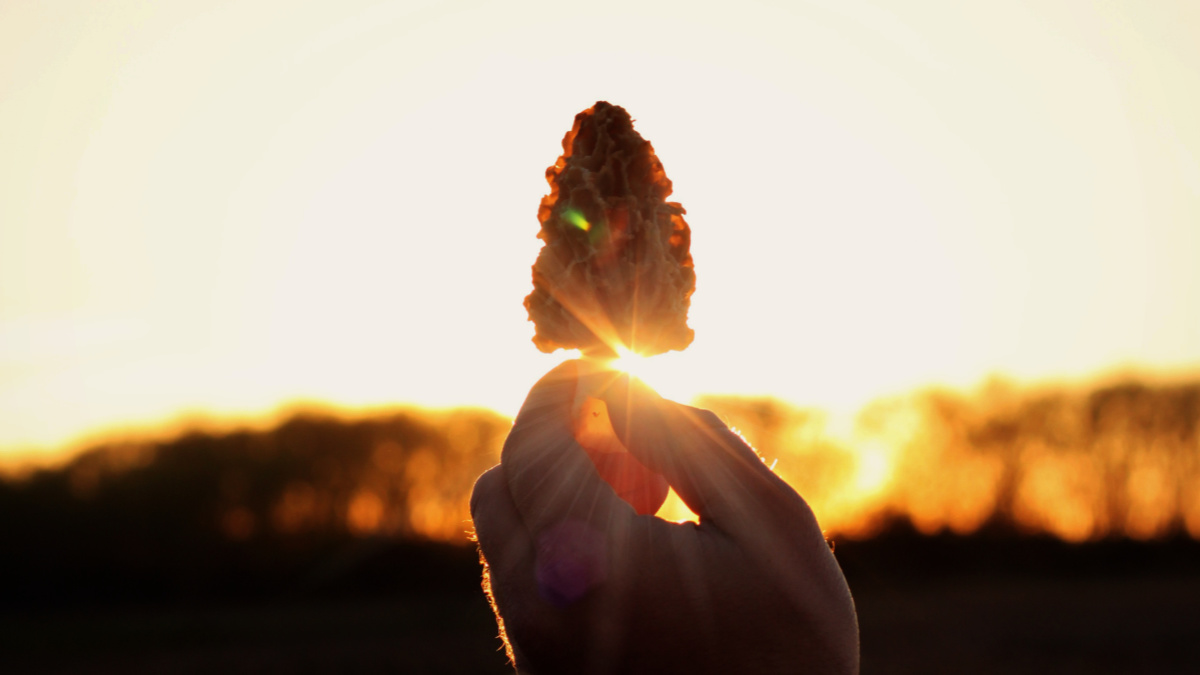
Where to Find Morel Mushrooms I’ve had strangers give up their best turkey spots and walleye holes in the spring, but turn mute when the topic changes to morel mushrooms. Hardcore gatherers will take their favorite mushroom areas to the grave, which means you’ll most likely have to find spots on your own. That’s OK—the challenge of striking out into the woods and finding something you didn’t know was there is one of the things that makes mushroom hunting so much fun.
The most common places to find morels are in river bottoms, sparse forests and burn areas. Morels need quality soil, moist soil and ample sunshine, so keep those three things in mind when exploring a new spot. The first places they will show up will be south-facing slopes, areas with fewer trees and spots that have sandy soil. As mushroom season progresses, they’ll make appearances in more shaded areas with less permeable soils.
It’s a good idea to brush up on your tree identification before hitting the woods. Elm and ash trees seem to be in the most mushroomy country, as well as sycamores, poplars and cottonwoods. Though the specifics vary between regions, take note of which trees are in the vicinity when you find a good patch of morels.
Morel mushrooms thrive in disturbed areas, though the reasons why are not well understood. Places that get irregular flooding or burns will produce some of the best morel picking in the country. Usually numbers will peak in the spring following a flood or fire, and each year after will get a little worse.
Typically, the best morel spots are also great for other mushrooms. If you stumble on a patch of inky caps, shaggy manes, oysters, pheasant backs or turkey tails , it’s likely there are morels in the area. Most springtime mushrooms favor similar conditions.
My absolute favorite spot to find morels is near downed timber. Almost every time I’m in mushroom country and find a tree that’s been tipped over, I’ll find morels. I consider fallen trees my slump busters during a tough day of mushroom hunting.
How to Find Morel Mushrooms The best thing you can do to find morels is to put on the miles. Just like with shed hunting, though, you should be concerned with efficiency. Consider the 80/20 rule , which means 80 percent of the morels will be found on 20 percent of the ground you have access to. If you know what this 20 percent looks like, that’s where you should focus the majority of your time.
When you do stumble on a morel, stop where you are. Morels are spread by microscopic spores, so when you find one, you should be able to find more in the same area. It’s not uncommon to walk a mile and find zero mushrooms, but then pick 5 pounds in an area the size of a parking spot. You’ll also want to take note of what vegetation is around, what the soil is like and how much sunlight the spot gets. The more you can observe, the more you’ll know what good mushroom country looks like.
If you’re mushroom hunting on public lands, the most pressure will occur on weekends. My favorite day of the week to mushroom hunt on public ground is Thursday. This gives the area enough time to grow more mushrooms that weren’t up the previous weekend, but still beat the rush of people that will be out there on Saturday.
Private land gives mushroom hunters a huge advantage. Having private access lets you hunt when convenient, and allows foragers to “let them grow” if the weather looks favorable. In the past, I’ve found small morels one day, had mild temps with a little bit of precipitation in the forecast, and returned a few days later to mushrooms that were three times the size. I don’t recommend doing this if on public lands, but rather suggest immediately picking everything you find.
When picking mushrooms, make sure you don’t harvest the entire morel. Pinch off the base at ground level with your fingers or a scissors. By leaving the volva in the soil, you give the mushroom a better chance of growing again the following spring.
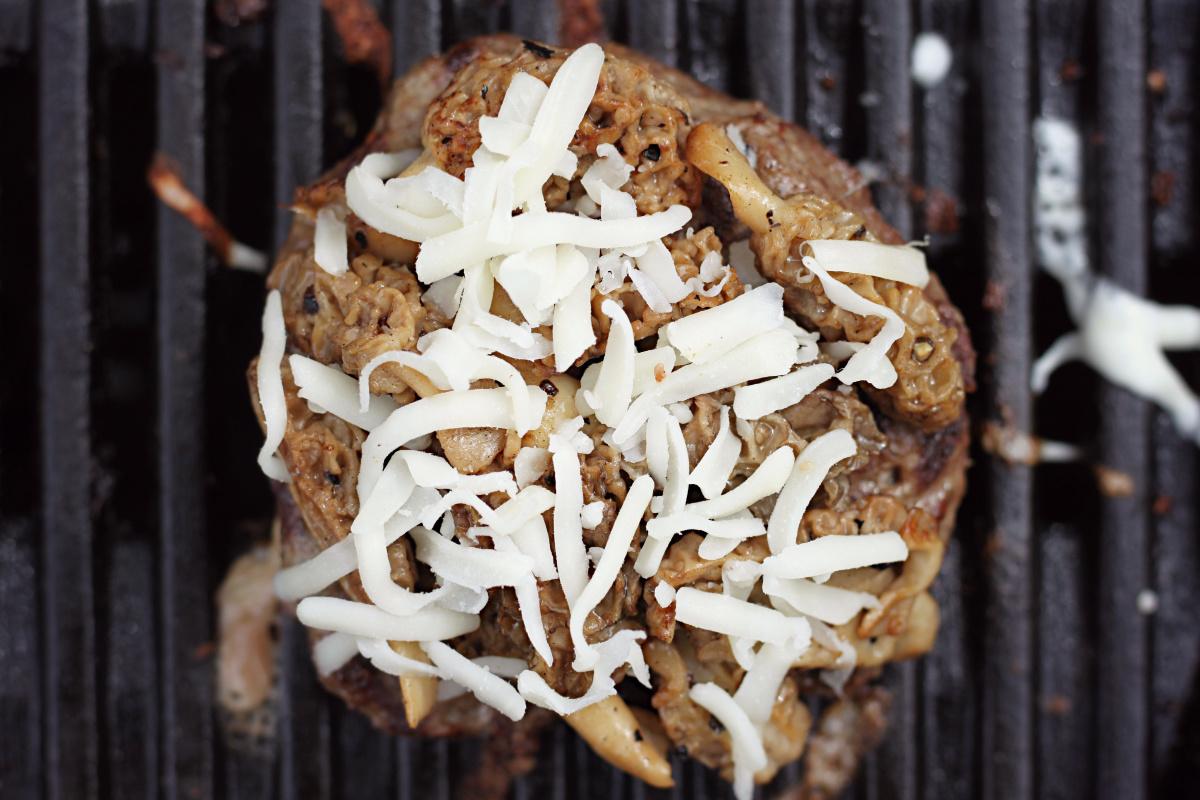
How to Sell Morel Mushrooms One of the reasons morel hunters are so competitive is because of the fungi’s value. Prices vary by year and region, but it’s not unreasonable to expect $15 to $30 per pound. In years when the weather doesn’t cooperate, the shortage of mushrooms makes prices go up. The contrary is true in years where the weather is perfect and everyone has a surplus of morels.
Even within a single year, however, prices can fluctuate . People are willing to pay more early and late in the spring when fewer mushrooms are available. There is also a “quality” factor, as morels that come from sandy soil fetch much, much lower prices. Some buyers won’t pay any amount of money for sand-filled morels.
The most common buyers are restaurants, grocers and commercial dealers, but they usually have the lowest payouts as well. The mushroom hunters I know that get the highest prices operate out of farmer’s markets in urban areas. Some sellers will drive a state away just to get a few dollars per pound more. If you aren’t satisfied with restaurant prices and can’t set aside a Saturday for downtown, consider advertising your harvest online. Facebook and Craigslist are easy, free ways to offload morels for straight-to-consumer value.
It’s important to know local regulations before selling mushrooms, though. Some states don’t allow you to sell mushrooms that are picked on public lands, while others require permits to sell items that were foraged.
How to Cook Morel Mushrooms If you decide to keep your harvest, as I often do, you’ll be in for a treat. Morel mushrooms have an unmatched earthy flavor that can’t be touched by anything else. They’re very versatile in the kitchen, too.
The most common way to cook morels is to sauté them in a hot pan with butter, garlic, salt and pepper. They can also be battered and deep-fat fried whole, or cut in half and go straight on a hot grill. You can use them in pasta or on a steak, or serve them as the main course or as an appetizer.
Before cooking, you’ll need to get your mushrooms clean. This is one of the most argued topics when it comes to morels, and I don’t think there is a right answer. In my opinion, the less cleaning the better.
If your morels came from soil that wasn’t sandy or muddy, just a quick rinse under water will do. But if your morels have sand, dirt or a bunch of bugs, you may need to soak them in salt water for a few hours. Next, gently dry them out on paper towels, and refrigerate them on a plate or in a paper bag. Don’t put them in an air-tight container, which will ruin their texture.
Eat your morels as quickly as possible. I’ve stored them in the fridge for up to a week, but the best quality for morels comes within 24 hours of harvest. Freezing is an option, although I don’t care for it.
To freeze morels, you’ll first need to dry them in a dehydrator or oven. For a dehydrator, set the temp to 110 degrees and go for 8-10 hours. For an oven, go with the lowest possible temperature and keep the oven cracked for 8-10 hours. You can then freeze them in jars for up to a year. When you’re ready to cook, rehydrate the mushrooms in a bowl of water for 20 minutes.
They won’t taste as good as fresh, springtime morels, but not much else does.
Feature image via Spencer Neuharth.

Sign In or Create a Free Account

3 Guaranteed Places to Find Morel Mushrooms

The 6 Trees Every Morel Hunter Should Know

5 Common Misconceptions About Morel Mushrooms

Beginner’s Guide to Mushroom Foraging & Hunting 101
- July 15, 2022
- 13 Comments
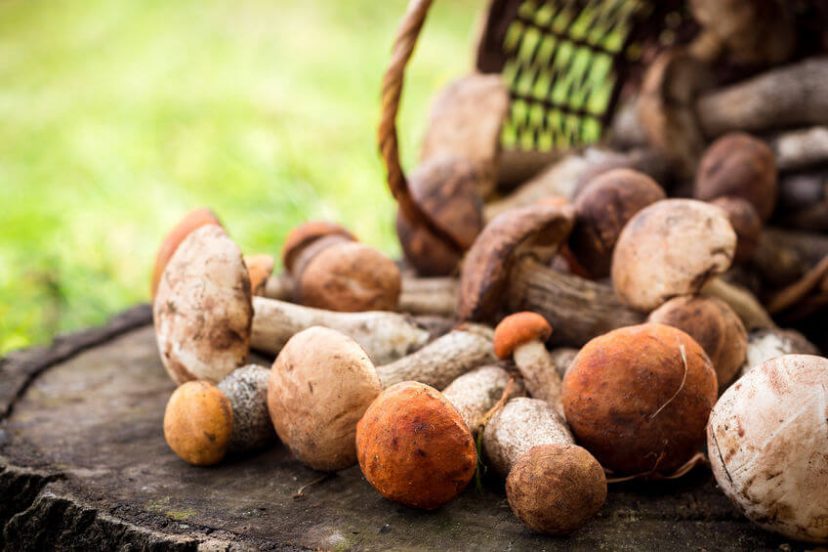
As a beginner you need to start your mushroom foraging experience by seeking a quality field guide so you get started on the right foot.
Hunting for mushrooms is a very rewarding experience. It gets you out into nature and allows you to bring home highly nutritional food in the process.
Its kinda like hiking with benefits. It is also kinda like hunting without having to kill any animals.
In the world of mushroom lovers, there are two types of people. First, there are those who prioritize availability and control so they decide to plant and farm their own mushrooms. Then there are those who want to source and consume their mushroom the old fashioned way – the foragers.
But let’s be honest. Mushroom foraging is definitely not for uneducated beginners. While it’s fun, it can also get dangerous. There are a number of poisonous mushrooms out there that you can easily mistake as edible ones.
While I don’t personally discourage mushroom foraging, it’s a good activity to do every once in a while that will allow you to connect with the ancient forager in your blood. Plus, it’s a good thing to get a rare edible mushroom when you get tired of your farmed varieties.
So I created this article to give beginners a good idea of what they need, what to expect, and what they should do when mushroom foraging.
Hopefully, by the end of the article you will be confident enough to start your own foraging adventure.
Table of Contents
Best Time to Go Mushroom Hunting
In order for mushrooms to survive and proliferate, they need specific conditions. Most of the time, they need moist, damp, and humid conditions. Older mushroom foragers know that mushrooms will literally grow like wild flowers after a few bouts of heavy rain especially if there has been a dry spell lately.
Some seasons work for some mushrooms while some don’t. For example, autumn is when most beginners and hobby foragers do their foraging. This is actually great especially when the dry spell ended in summer and autumn welcomed you with the rains.
But wait, this does not mean you should go running outside right after the rain. It might take hours for some mushrooms to pin and a few days to mature. The perfect time to go foraging is a few days after the heavy rains right after the mushrooms are finished “reproducing”.
If you are not particular with what you forage, you can start your foray into foraging late September up until the end of November. You’ll have plenty of competition though as this is the busiest season for collectors and foragers.

5 Expert Tips on Where to Find Wild Mushrooms

The thing about mushrooms is that they grow just about anywhere as long as the conditions are right. If you are just a beginner with no specific mushroom to forage then you are in luck. You can start just about anywhere as well.
However, to better increase your chances of finding mushrooms you can start with “hotspots” where you are more likely to see mushrooms.
5 Common Places to Find Mushrooms
1) A lot of mushrooms like decaying matter so you might want to go and look for mushrooms on downed logs or stumps.
2) Not all mushrooms like dead matter so looking at tree trunks and around the root area of trees is wise. Some trees attract specific types of mushroom so it might be great to learn a bit more about that.
3) Burned parts of the forests or fields are one of the open secrets of mushroom hunters. Some mushrooms like to take over a burnt area.
4) Loamy soil is a good place to grow for some mushrooms as it is a great mixture of sand, clay, and organic matter.
5) Walking along streams and creeks can net you a boatload of mushrooms as these areas are high in moisture and soil content. Swampy areas (especially even in hot weather) are also great.
If you are foraging mushrooms as a hobby, there’s no need to look for a hotspot. Talking a walk at the nearby woods or fields can net you some mushrooms.
If you are having a hard time looking for a place to start, you can join mushroom hunting/foraging groups. They might have scheduled trips for beginners that can take you to places where mushrooms are common.
Like This Article? Pin It on Pinterest!

6 Essential Tips to Identify an Edible or Poisonous Mushroom

A lot of mushrooms look very much alike each other. Also, while there are a lot of “rules” that you might hear from other foragers that don’t work all the time.
6 Tips in Identifying Mushrooms
1) “If you can peel the cap then it’s edible” – Death Cap mushrooms can easily be peeled.
2) “If you found it in the woods then it is safe” – Not true. A lot of woodland mushrooms like the Funeral Bell are quite deadly.
3) “If other animals eat them then they are edible” – Some toxic compounds found in some mushrooms don’t have negative effects on other animals or insects. Only humans can experience them.
If you are looking for rules that will at least ensure you don’t end up picking a poisonous mushroom then I have a couple for you:
4) Don’t ever pick mushrooms with white gills or ones that have a ring on its stem or those that have a volva (a sack like base). Worst case you missed out on a mushroom but you will live to see another day.
5) Mushrooms with very bright and loud coloring especially ones that have red on its stem or cap should be left alone.
6) Lastly, don’t pick something you are not 100% sure that is edible.
Many mushrooms have a false version and a true version. Like the False Morel for example. The True Morel is hollow on the inside while the False Morel is solid. The True Morel is good, edible and safe to eat while the False Morel is semi toxic.
Best Locations in North America to Hunt for Mushrooms
You may be wondering if there are any locations to go foraging for mushrooms near you. There are countless mushroom species however one of the most popular mushroom to hunt for is the Morels.
The Morel has many heath benefits and also taste delicious. There are countless locations in the pacific northwest, however if you go where the Morels are you will surely be able to find other mushrooms near that location.
The best site I found to find locations of Morel mushrooms is at The Great Moral Website . They have a really nice interactive map that allows you to zoom in on your specific location:

Another option is to just go to the nearest wooded area near you and start looking around. When I visit my dad in late summer we love to go to the golf course near his house and search for secret patches of the chicken of the woods mushroom.
My dad ended up throwing some left over pieces in his back yard and now he has his own persona stash that grows once a year.

Mushroom Hunting Tools
The main tools you will need other than a field guide will be the following:
1) Mushroom Foraging Knife – While any sharp knife will work they do sell knives that are specifically made for mushroom hunters. They are typically fordable with a small brush on the end for cleaning off any dirt you find on the mushroom.
2) Mushroom Foraging Bag or Basket – While you could use any bag to carry your mushroom it is recommended that you use a mesh bag so that while you are walking around you will continue to spread the spores of the mushrooms throughout your hike so that there will be more mushrooms for you next year.
Mushroom Season Chart
You will need to know the different seasons that the different mushrooms have because then you will know what time of year to go looking for them. The cool thing is different mushrooms grow and different times of year. So no matter the day there will always be a mushroom that you can go hunting for.
Here is a list of the different mushroom seasons:

If you want to save yourself the trouble, you can just go and get yourself a mushroom hunting guide. Even the most seasoned foragers (been doing it for 20+ years) still bring with them a mushroom field guide just in case they see something new. If you are a beginner and are foraging alone, a field guide is an indispensable tool that will save you the trouble of a trip to the ER.
How about you? Have you had the chance to forage? Let me know about your tips on when and where its best to forage for these wild edibles in your area. Also, I’d love it if you could share some tips about foraging especially for beginners.
If you decide that hunting is not for you but you still want the health benefits of many of these medicinal mushrooms you can search the grocery store or Amazon Whole Foods grocery store online with free delivery . Or you could look into growing your own , buy dried mushrooms or get them in supplement form .
After reading this beginner’s guide to mushroom foraging you should have a very good understand of all the benefits and risks of hunting for wild mushrooms. You can see how enjoyable it will be to be out in nature like a hunter but not having to kill any animals.
________________________________
FDA DISCLAIMER
Curative Mushrooms has to post the standard FDA Disclaimer…The statements made regarding medicinal mushrooms have not been evaluated by the Food and Drug Administration. The efficacy of these products has not been confirmed by FDA-approved research. Curative Mushrooms is not making claims intended to diagnose, treat, cure or prevent any disease. All information presented here is not meant as a substitute for or alternative to information from healthcare practitioners. Please consult your healthcare professional about potential interactions or other possible complications before consuming the medicinal mushrooms. The Federal Food, Drug and Cosmetic Act requires this notice.
MEDICAL DISCLAIMER
This content is for informational and educational purposes only. It is not intended to provide medical advice or to take the place of such advice or treatment from a personal physician. All readers/viewers of this content are advised to consult their doctors or qualified health professionals regarding specific health questions. Neither Curative Mushrooms nor the publisher of this content takes responsibility for possible health consequences of any person or persons reading or following the information in this educational content. All viewers of this content, especially those taking prescription or over-the-counter medications, should consult their physicians before beginning any nutrition, supplement or lifestyle program.
_________________________________
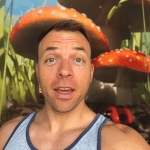
Always looking for ways to improve the health of myself and my family led me to the discovery of medicinal mushrooms and the numerous health benefits they have on the body. My mission is to spread this knowledge and help as many people as possible.
More to Explore

Mushroom enthusiasts and foragers are often captivated by the diverse and mysterious world of fungi. Among…
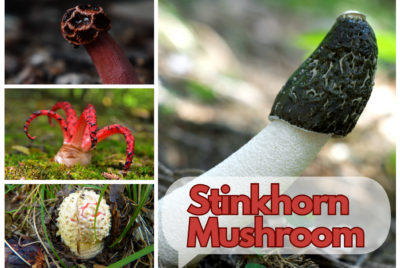
Stinkhorn mushrooms, scientifically known as Phallus impudicus, are a peculiar and intriguing group of fungi that…
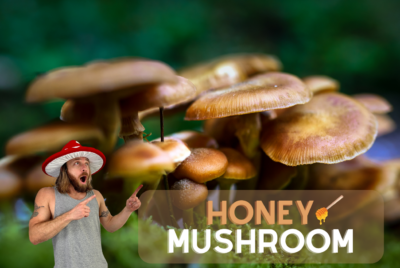
Honey mushrooms, scientifically known as Armillaria mellea, are a fascinating group of fungi that have captured…
This Post Has 13 Comments
Please help me identify
Please advise what you need help with identifying. You can upload pictures here.
Dear Oliver or to whom it may concern, I’ve recently moved to the Yucatan Peninsula in Mexico. I would like to find and grow whichever mushrooms will grow easily in my garden, for fun and perhaps profit. What recommendations can you give me? Any advice is sincerely appreciated. Thank you, Teresa
Many people enjoy growing oyster mushrooms in a garden bed. They are also a delicious choice edible mushroom and are the easiest of all mushrooms to grow.
Hi Oliver, Am enjoying reading your foraging posts – very nice pictures and easy to understand discussions. Thanks! So two days ago I was checking my compost pile and when I pulled back the cardboard and plastic covering an older aged section I found 5 huge mushrooms that made me gasp in surprise. I thought they looked like Portobellas and decided to pick them . I took a couple pics and am hoping you can help me decide if they are safe to eat. The largest one weighs 1 1/4 lb and the stem of it broke apart as I was twisting and pulling by hand to free it from the dirt, trying to leave the very bottom in the soil. That piece is directly below the cap at 6 o’clock position. The other mushrooms weighed in at 7 oz each. The edges of the caps especially of the largest one look a little tattered, maybe because of age? There were a couple of very tiny round “baby” mushrooms attached to the base of the stems and I put them back on the dirt hoping they would grow. So, I was not sure if these could be considered growing in a cluster or if that matters for identification. I think two of them were close together and pushing on each other’s caps, hence the bent shapes. I could not find any info on whether there are poisonous portabella look-alikes. Looking forward to hearing what you think they might be. I can only upload one pic at a time, so will send another message.

Sending a second picture of what looks like Portobella — but not sure. What do you think?
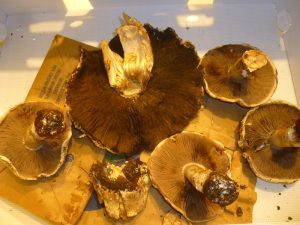
I’m interested in a book on psilo hunting. What do you have?
[…] Supply hyperlink […]
[…] Beginner’s Guide to Mushroom Foraging – Mushroom Hunting 101 […]
Interested in all eatables mushrooms.
Reishi and Lion’s Mane mushrooms ftw! 🙂 You can check this out if you’d like to grow them at home: https://curativemushrooms.com/grow-lions-mane-and-reishi-best-mushroom-grow-kit
Love mushrooms.Good for you.
[…] more information on mushroom hunting and foraging, check out this beginner’s guide or this resource with tips and advice for getting […]
Leave a Reply Cancel reply
Your email address will not be published. Required fields are marked *
Save my name, email, and website in this browser for the next time I comment.
Attachment The maximum upload file size: 1 MB. You can upload: image . Links to YouTube, Facebook, Twitter and other services inserted in the comment text will be automatically embedded. Drop file here
- About Oliver
- About Curative Mushrooms
- Free Resources
- Content Hub
Get Your 'Happy Mushrooms For Sad People' Grow Kit Now & See How Easy Growing Mushrooms At Home Can Really Be...
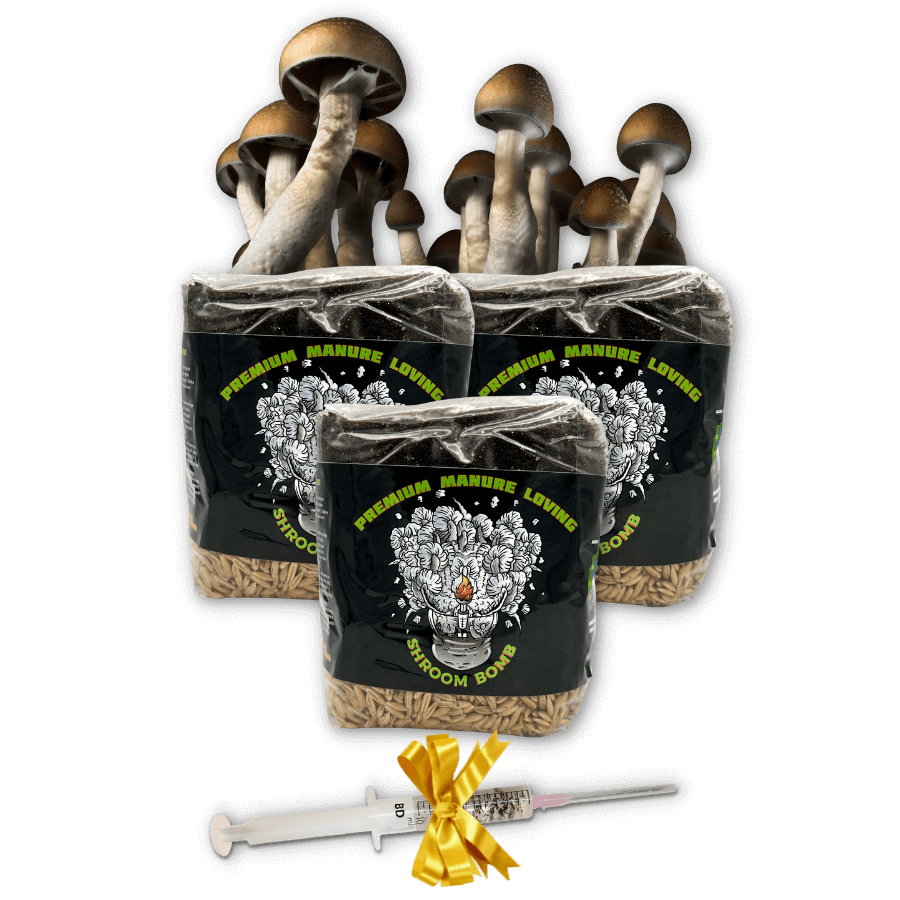
A Beginner’s Guide to Foraging & Mushroom Hunting
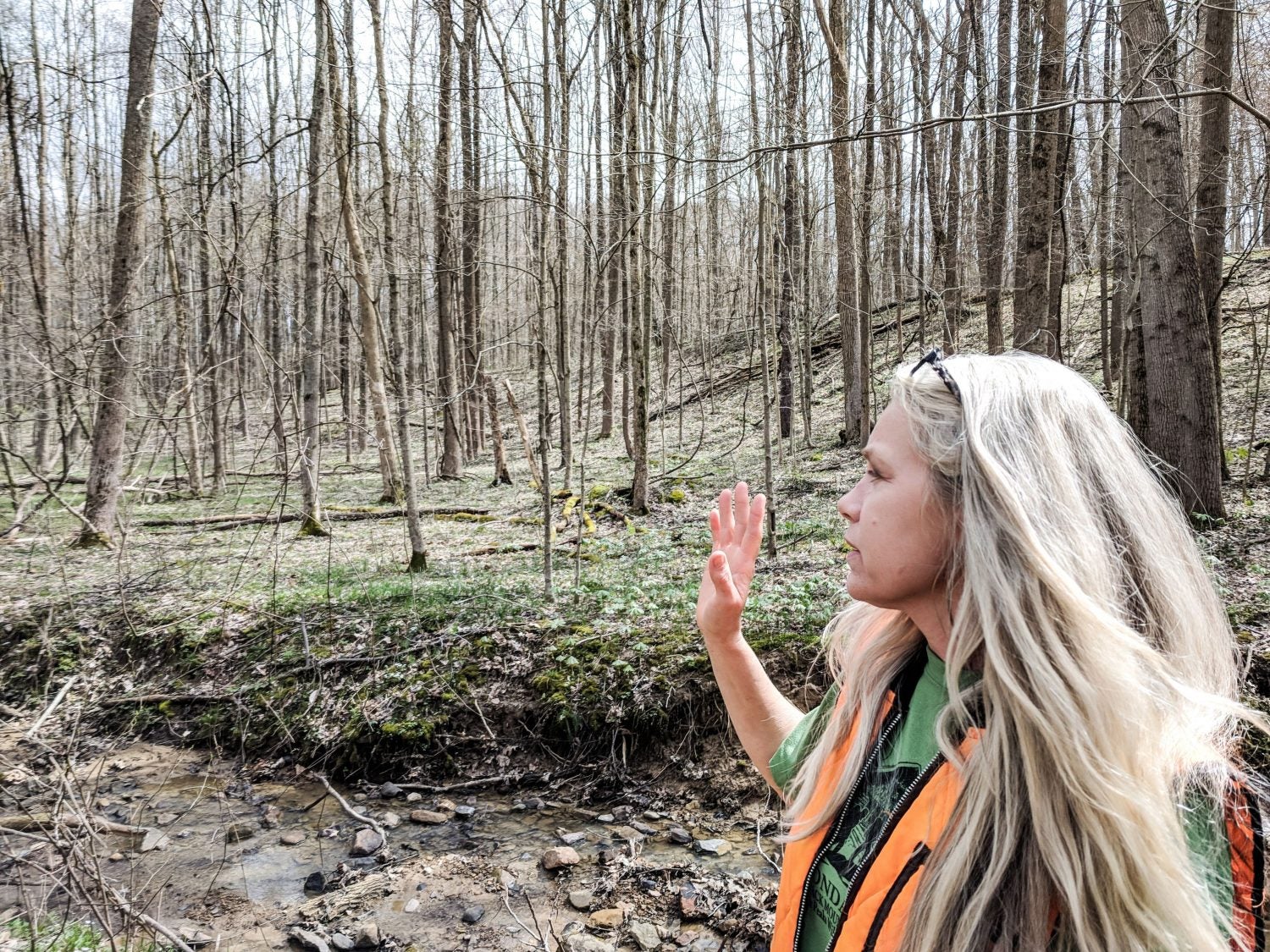
Campers, have you tried mushroom hunting? The Dyrt writer Meghan O’Dea recently traveled to Ohio to learn all about this thrilling way to connect with nature.
Disclaimer: Consuming foraged mushrooms can be risky (poisonous mushrooms). Only those who are well-educated on foraging and mushroom varieties should attempt to do so. Please note that this is one writer’s experience and should not be taken as expert advice.
Introducing Our Expert Hunter
Naturalist and mushroom hunting expert Andrea Moore is easy to spot amongst the grey pines and beeches. Her long, silvery hair and bright orange hunter’s vest catch your eye as she heads confidently off the deer-worn trails.
Andrea knows what she’s aiming for — hidden caches of morel mushrooms, spicy cutleaf toothwort, and pungent ramps. “I walk about 300 miles in a season and there are days I don’t find anything,” explains Moore. But that’s time well spent getting to know every tree, every root, and every bramble.
Lately, though, she’s gotten lucky. She’s carrying a net bag full of the morels she picked yesterday. If a tree is one of the species morels favor like elm, ash, or sycamore trees, a crop could appear.
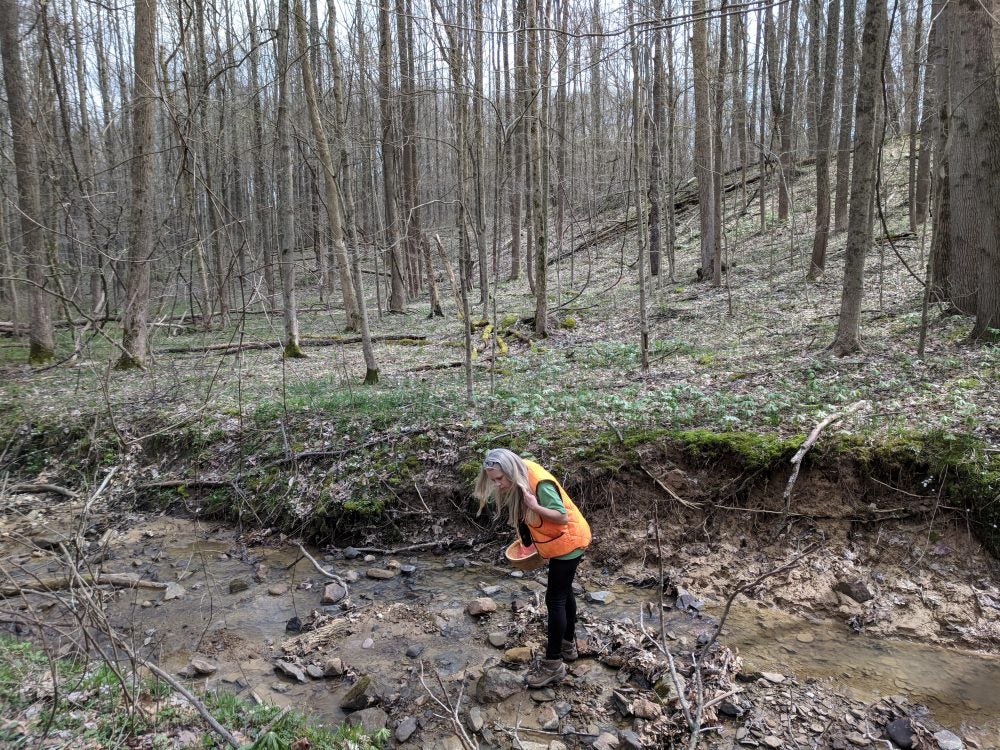
Moore crosses creek bed while giving a tour of her property in Ohio.
My Mushroom Hunting Experience
It’s not my first time mushroom hunting, but it is my first time with an actual mycologist.
Andrea Moore is a member of the Ohio Mushroom Society . She’s also an expert on not only tasty fungi but also the forests of Hocking County, Ohio .
She’s taking us around her property, where it’s legal to pick whatever we find. Most of her time outside is spent at Clear Creek Metro Park . There you can find her dressed in her ranger uniform instead of an orange vest.
We finally find morels peeking out of the duff by a dying fruit tree. She hands over a wood-handled knife.
Cutting the mushrooms, rather than picking them, preserves the underground system the mushrooms sprout from. This helps the mycological colony continue to fruit. She takes the same approach when we kneel down by a fragrant patch of wild ramps. Where she carefully digs up only a few with a trowel, leaving the rest to live their quiet, wild lives.
Moore emphasizes the importance of sustainable foraging. This means disturbing these rare plants as little as possible and taking only what you need for the dinner table. It helps that wild mushrooms pack such intense amounts of rich, umami flavor in such small packages.
Later, in Andrea’s kitchen, she shows us the big canisters of dried mushrooms she harvested last season. She’s been rehydrating handfuls and dropping them into her Alfredo sauce all winter long.
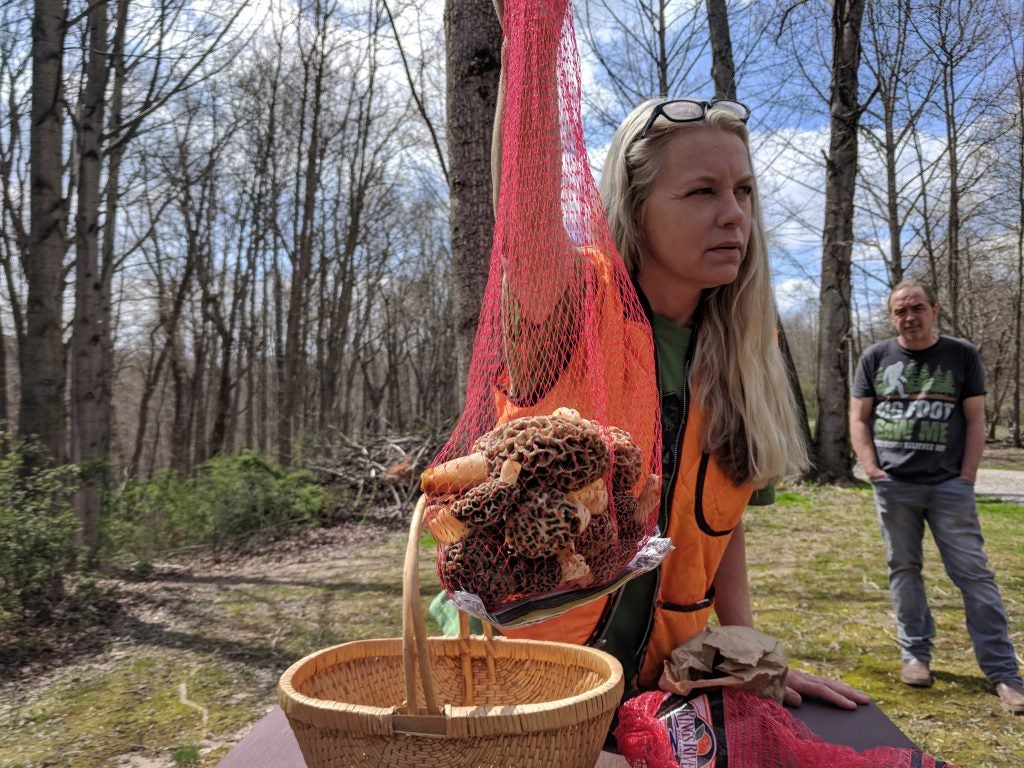
Moore holds up a cache of morels in a net bag, which lets her redistribute spores while she’s hiking.
Mushroom Hunting for Beginners: What You Need to Know
First, you need to know where to go. Rules vary widely about where you can and can’t legally forage. Most national parks, for example, have rules that prohibit removing plants. Though in some instances individual park supervisors have leeway in setting and enforcing the specifics of that policy.
Many State Parks have provisions that allow picking certain types of edible mushrooms “for personal consumption”.
In Ohio, for example, you can forage in state forests, the state’s wildlife management area, and the Wayne National Forest . However, you’ll want to get in touch with your local parks to find out the specific rules they have. It can really vary depending on who’s in charge and what laws are on the books.
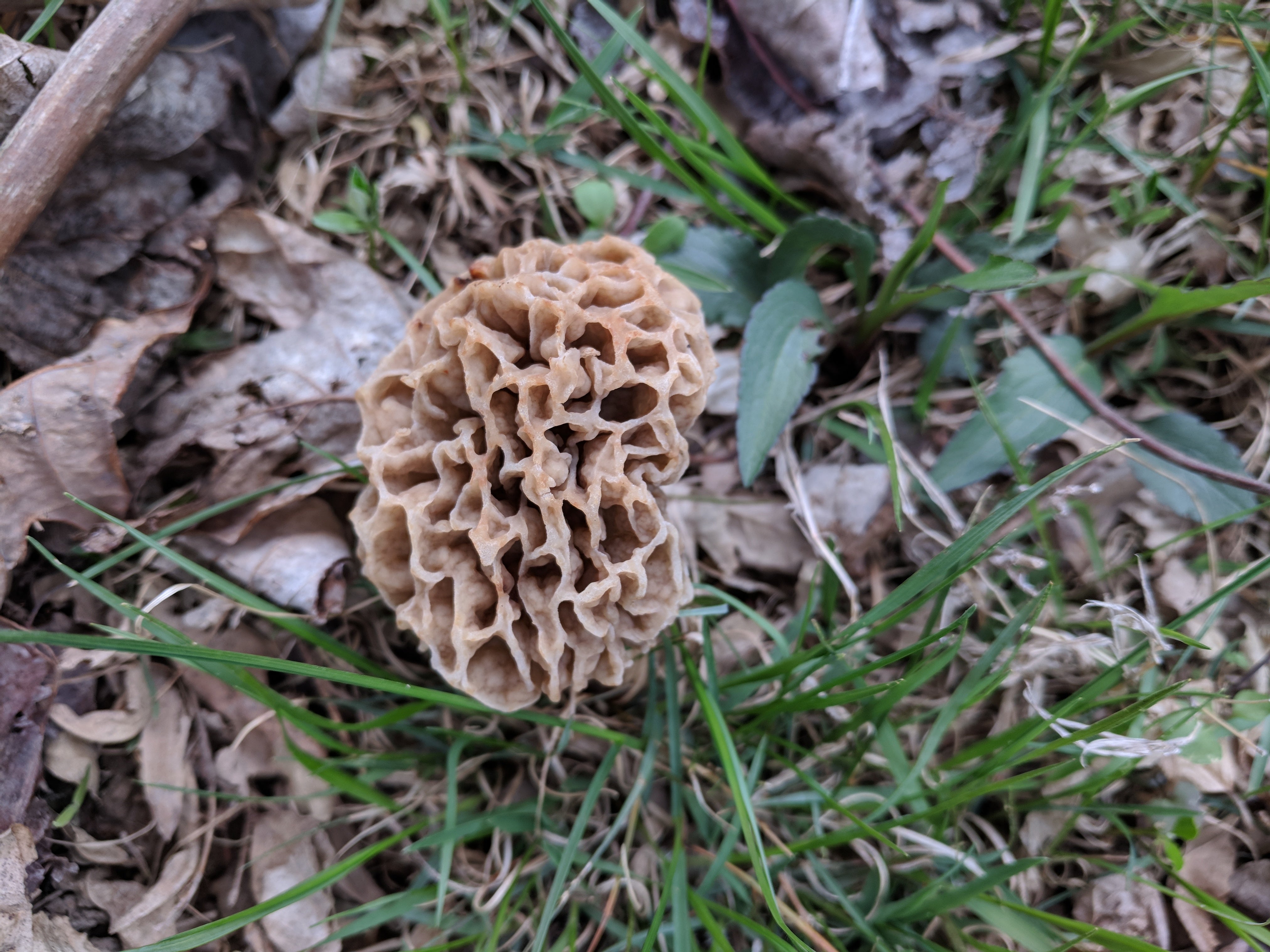
A wild morel mushroom at the base of a distressed fruit tree.
Many private landowners and foragers are even more protective of their foraging spots than anglers are of their favorite fishing holes. Moore described cleaning up signs of other foragers on the trail that might look like nothing more than trail trash.
An aluminum can next to a tree or dangling from a branch might seem like litter. But she recognizes them as markers left by foragers hoping to check a spot for fresh produce later. She recently told NPR about the cans, as well as the lengths she goes to protect her own privacy and foraging secrets. She even takes location tracking off her phone and photo metadata.
Sustainable Mushroom Hunting
It’s no wonder there’s such fierce competition and secrecy. Considering how much rare ingredients like morels, oyster, and hen of the woods mushrooms can fetch at market. There can be a real economic incentive for keeping your cache on the down low. Another motivation is ecological preservation.
Over-harvesting by inexperienced or greedy foragers is a real risk to edible roots and bulbs like ginger and ramps. Mushrooms, too, are vulnerable to over-picking. Responsible foraging practices and permission from private landowners are musts to keep delicate flora thriving.
Further complicating things for would-be foragers on public lands are rules about staying on-trail. Which can make it difficult or downright impossible to find the small pockets of, say, sorrel or chickweed. After all, you can’t expect plants to helpfully sprout up right in the middle of a well-worn, heavily trafficked trail.
The illusive nature of many of these plants means that mushroom hunting can be a long, painstaking activity — literally! Just before our expedition, Andrea Moore spent an hour tangled up in a thorny thicket trying to reach the mushrooms that are now in her basket.
Nature is good at protecting its bounty, so pack long sleeves before you head out. Don’t forget to check yourself for ticks once you’re back in the comfort of your own home or campsite.

The author by a patch of wild ramps.
Seasonality
Timing is also important to foragers. Some plants are only in season for a few weeks each year, and just as spring is getting its start. Thanks to the late winter, ramp season is only just getting started in Appalachian Ohio.
Further west and north, the season tends to extend later into spring. This means you have even more time to get out and start searching.
If you’re unsure when and where to start mushroom hunting, ask your state’s Department of Natural Resources. They will be able to put you in touch with naturalists who are experts on local flora and fauna. They’ll refer you to foraging societies, mycology clubs, and other organizations you can learn from. Organizations like the Ohio Mushroom Society that Andrea Moore is a part of.
You can also consult this list of clubs affiliated with the North American Mycological Association to find one near you. Many are organized by state or region, but some cities have their own clubs, too, like the San Francisco Mycological Society . For even more resources, also look to colleges and universities who might have biologists and other experts on staff. Penn State even offers a whole degree in Mushroom Science and Technology .
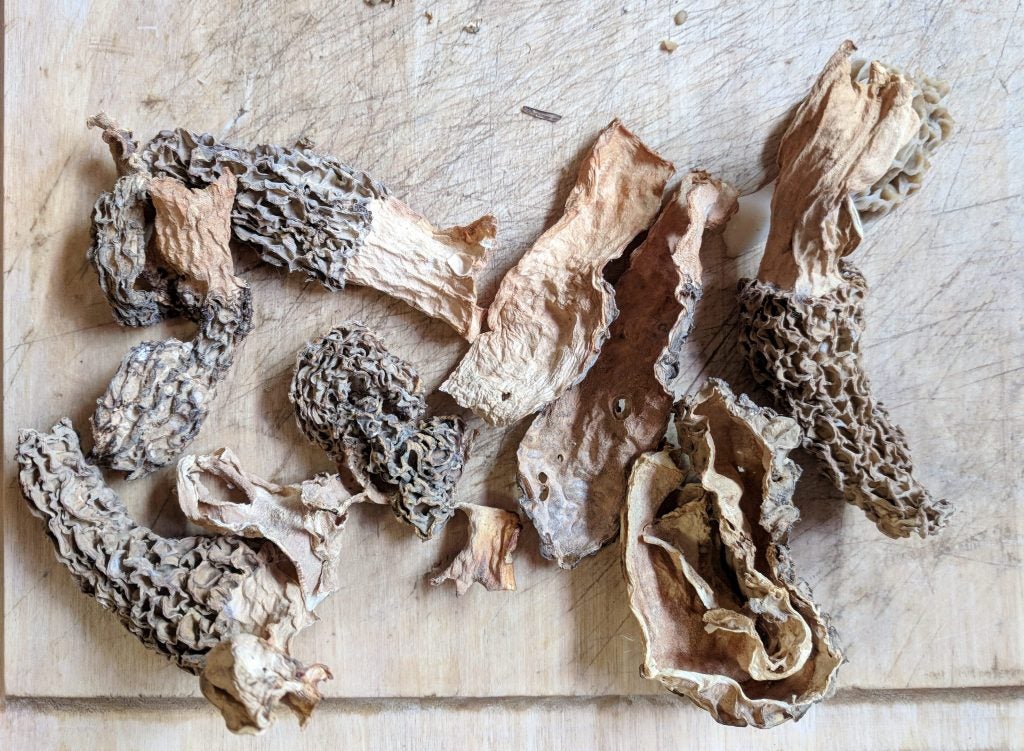
Dried morel mushrooms
Safety Precautions
It bears repeating, of course, that one must be very careful when foraging not to mistake something inedible or dangerous for something delicious. Books like Mushrooming Without Fear and Edible Wild Plants: A North American Field Guide can help alert you to the basics. But it can take years of practice to feel really confident about what you pick and eat.
It’s not just mushrooms you need to watch out for, either. Fiddlehead ferns are a wonderful spring delicacy, but you need to be quite sure you find the right type of fern. This can be tricky when you aren’t sure of the difference between Bracken fern or a Christmas fern or a Shield fern. Of the three, only the later has safely edible fiddleheads.
One way around the risk of eating the wrong thing is to forage for ingredients you can use in natural dyes. For example, turkey tail mushrooms, goldenrod, black walnuts, pokeweed, and hollyhock. That will also extend the number of seasons during which you can enjoy your new hobby.
As dye plants grow year round, while many edibles are only at their peak during the spring and summer. May Apples, for example, actually peak in June and July.

A foraging basket next to a patch of wild ramps.
When you get it right, though, the results can be delicious. Edible Cleveland has some wonderful foraging recipes that will give you ideas for what to do with your haul. So do cookbooks like The Wild Table, Tales from a Forager’s Kitchen, and Wild Cocktails From the Midnight Apothecary. If you want all the flavor without the risk, keep an eye out for local restaurants that feature foraged ingredients.
Dining Out for Foraged Ingredients
Foraged ingredients have been gaining popularity coast to coast, and are easier than ever to find in chefs’ kitchens. Lovely’s Fifty Fifty in Portland, Oregon, the Porter Beer Bar in Atlanta, New York City’s Aska , Lazy Bear in San Francisco, and Kindred Spirit in Logan, Ohio. These are just a few of the many restaurants serving up everything from edible lichen to brown butter fiddlehead ferns and wild violet salads.
Just by Googling “restaurants that use foraged ingredients” you can find something in your area. Some of the biggest restaurants hire professional foragers to source incredible ingredients like edible lichen. But small restaurants in lesser-known towns have connections, too.

A honeyed flatbread topped with foraged morels, ramps, spring onions, and an egg at Kindred Spirit in Logan, Ohio.
What’s really special about foraging isn’t just the potent ingredients that end up on our plates. It’s the experience we have in looking for them. All too often we hurry through our hikes, forgetting to look closely at what’s around us .
Foraging slows you down and forces you to become more aware of your neck of the woods. It’s a practice made easier by patience and repetition, and an inevitable consequence is a growing intimacy with the land.
Popular Articles:
- Get the Latest 2023 Camping Travel Trends
- How To Find Free Camping in National Forests
- The Checklist Every First Time RVer Needs
- Find Free Camping With The Dyrt Map Layers
- The Ulimate Boondocking Guide To Free Camping
- Everything You Need To Know About Wifi For Your RV
- 7 of The Best Overland Routes in North America
- 14 Wilderness Survival Tools You Should Have in The Backcountry
- Here's What To Add To Your Primitive Camping Checklist
Meghan O'Dea
Meghan O'Dea is a writer, world traveler, and life-long learner who grew up in the foothills of Appalachia. College led to summer stints in England and Slovenia, grad school to a sojourn Hong Kong, and curiosity to everywhere in between. She has written for the Washington Post, Fortune Magazine, Yoga Journal, Eater Magazine, and Uproxx amongst others. Meghan hopes to visit all seven continents with pen and paper in tow.
More Articles
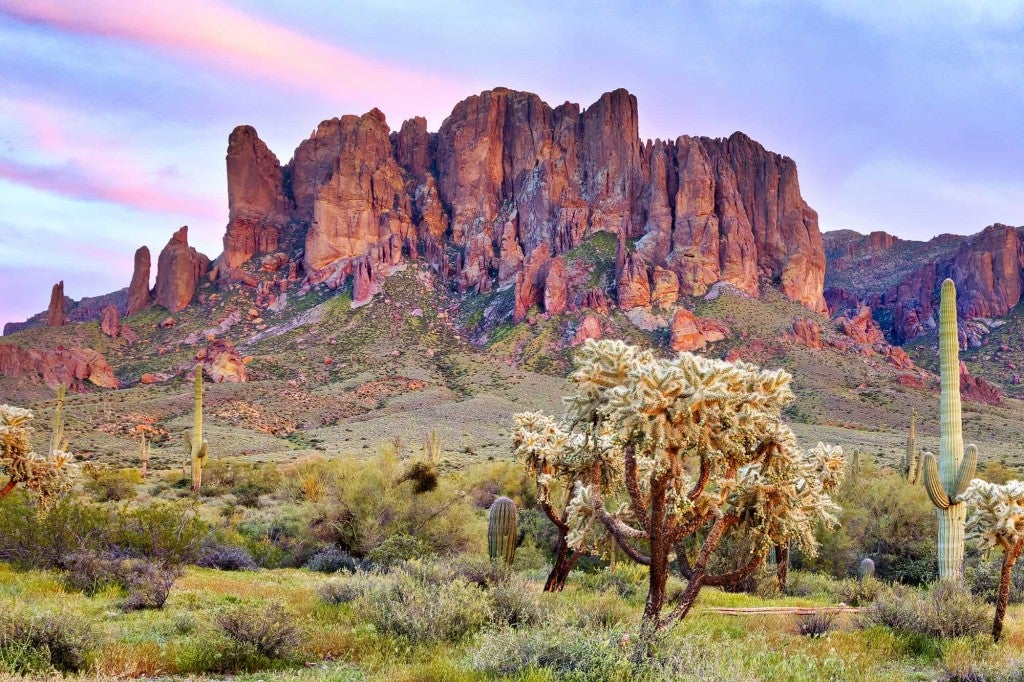
Adventure Abound in Arizona’s Superstition Mountains
EIt started with a cool map in the hands of a young woman that read, simply, “Superstition & Four Peaks Wilderness Areas.” Standing next to…
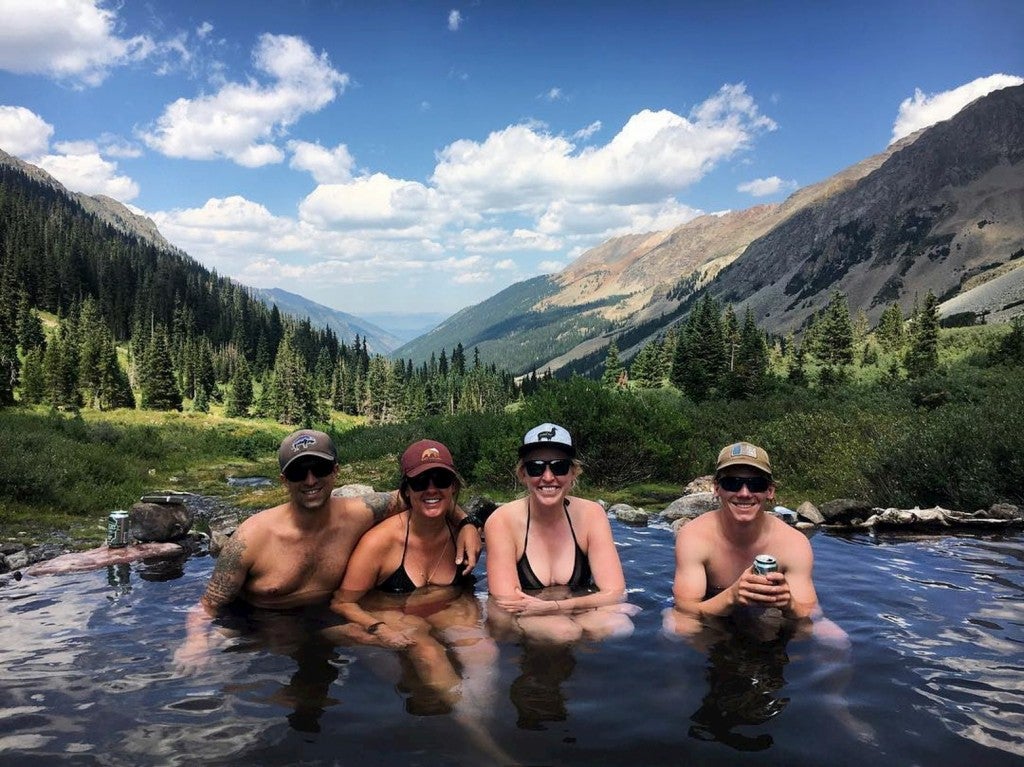
The Most Famous Hot Springs in Colorado Aren't Easy to Reach
Conundrum Hot Springs is the most famous alpine hot spring in Colorado, which is part of the reason why it’s also a hot spot (pun…
How to go mushroom hunting
Turn your hikes into a foraging expedition during mushroom hunting season
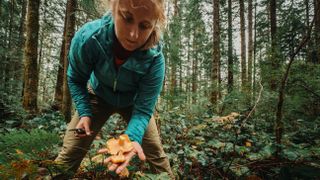
There’s so much to admire when you’re out on a hike, from wildflowers to wildlife , but many of us are drawn into the darker places where nature’s delicacies grow, and we’re not talking about the hiking snacks at the bottom of your backpack . Many of the places we love to hike bring a delectable feast of fungi at certain times of year, from mouth-watering morels to succulent shiitakes. If you’re a bit of a forager-in-the-making and want to learn more about how, when and where to go mushroom hunting on your outdoor adventures, you’ll want to read on for our guide to how to go mushroom hunting, including everything you need to get started.

When is mushroom hunting season?
Let’s start with when you can expect success foraging for mushrooms. Like most things in the natural world, mushroom season varies a bit according to your location and in certain places, some mushrooms do grow year-round. However, the thaw period of late spring usually signals the beginning of mushroom season which may continue through the summer in areas that aren’t too hot, while the fall usually provides another boon for mushroom hunters, especially if you live somewhere with a lot of autumnal damp.
Generally speaking, mushrooms flourish in cool and damp conditions, so after a rainfall is a great time to head out and forage for some fungi, while if there’s been a long stretch of dry weather, you’ll do better to bring the binoculars and try bird watching instead.
It’s helpful check a good weather app and keep an eye on temperatures, too. If it’s cooler during the day but not falling below about 50°F/10°C overnight, you don’t have to worry about overnight frost claiming the mushrooms before you can reach them. Of course, it’s helpful to pick up a guidebook specific to your area – find some suggestions in the next section.

Additionally, different types of mushrooms will have different growing seasons, while some such as the elusive morel have a very short season, so it’s helpful to know when you might want to prepare for certain mushrooms:
- Morels: April and May
- Chanterelles: from late spring to early fall (later in the UK)
- Porcinis: September and October
- Shitakes: often appear after a rainfall in spring and fall, sometimes summer
- Chicken of the woods: late spring through the fall
- Giant puffballs: late summer through the fall
Of course, the longer mushrooms grow, the larger they’ll get, so it’s a good idea not to go out too early. But on the other hand, the longer you leave them out there, the greater the chances of another hunter finding them first. With practice, you’ll find the sweet spot between picking mushrooms that are too small and missing out on your loot.

What is the best place to go mushroom hunting?
So, there’s been a few days of rain and you’re heading out to source yourself some mushrooms for tonight’s soup or stew – where do you go? After all, other mushroom hunters never reveal their stashes. Well, you already know that mushrooms like cool and moist places and they also prefer the dark. Your best bet is to head for woodland areas where the tree canopy provides natural shade and mushrooms like to grow around the base of trees like oak, pine, birch and beech as well as on dead trees such as aspen trees. You can also target your search around moist areas such as streams and bogs .
Advnture Newsletter
All the latest inspiration, tips and guides to help you plan your next Advnture!
Mushrooms will also grow in grassy areas which means you can find them on hillsides as well as in fields and pastures where livestock graze – they thrive on the fertilization from the animals as well as the shorter grass here. However, if you are mushroom hunting on farmland, make sure that you have permission to be there, and that you know what to do if you find yourself in a field of cows to stay safe.
If you find a mushroom, stay in that area and keep looking for more – mushrooms can grow in tight knit groups called “troops” and looser gangs, but they usually have some fungi friends nearby.

How do I learn mushroom foraging?
Obviously, the big concern when it comes to mushrooms is what ones you can actually eat. Not all mushrooms are fit for human consumption so you don’t want to just head out into the woods and start munching. Though we’ve all been raised on adventure stories and fairytales where people clutch their throats and instantly die upon eating a poisonous mushroom, not all unsuitable mushrooms are deadly; they just might not taste very nice.
The University of Arizona divides mushrooms into three categories – edible, poisonous and inedible – and explains that the latter category might simply be leathery and tough. Obviously you want to avoid both poisonous and inedible mushrooms, so you’ll want to do some research before you set off so you know what to look for and feel confident in the field.
You can conduct research online and REI has various mushroom guide books for US readers such as North America , the Southeast , California and Mid Atlantic , while UK hunters can find information about the mushrooms of Britain and Northern Europe in the Collins guide .
In addition to research, going out with an experienced mushroom hunter is a great strategy. The problem is that most mushroom hunters don’t want to show other people where all the best spots are, but you may be able to find a professional guide or park ranger who’s willing to share, and if you have any chef friends, beg and plead for them to bring you along on their next foraging trip (and promise not to give up their secrets).

What do you need for mushroom hunting?
In addition to your guidebook, which we recommend you carry with you, you’ll want the following items for a successful mushroom hunting expedition:
- Boots : because you’ll likely be traipsing around in muddy areas, wear a decent pair of hiking boots with good tread for slippery conditions.
- Long pants : even if it’s still fairly mild where you are, it’s best to wear long hiking pants rather than shorts since you are probably going to be getting off trail and into areas where ticks might be a problem.
- Breathable container: the most romantic option is a wicker basket but of course a paper or cloth bag will work to put your mushrooms in – avoid airtight containers which make your mushrooms “sweat” and speeds up decomposition.
- Knife : bring your best camping knife so that you can harvest your mushrooms easily.
- A magnifying lens : you might want to bring a magnifying lens to better study your mushrooms and make sure you’re correctly identifying them.
- Insect repellent : if you’re going out in the spring or summer months, those moist days will be paradise for mosquitos as well as mushrooms, so make sure you wear insect repellent .
- Hand sanitizer : it’s not a bad idea to bring hand sanitizer so that you can sterilize your hands in case you handle mushrooms that turn out to be poisonous.
- Permit : in certain areas, you may actually need a permit to pick mushrooms – check that you’ve fulfilled all local requirements before you go.
- How to bird watch: first timer's guide
Julia Clarke is a staff writer for Advnture.com and the author of the book Restorative Yoga for Beginners . She loves to explore mountains on foot, bike, skis and belay and then recover on the the yoga mat. Julia graduated with a degree in journalism in 2004 and spent eight years working as a radio presenter in Kansas City, Vermont, Boston and New York City before discovering the joys of the Rocky Mountains. She then detoured west to Colorado and enjoyed 11 years teaching yoga in Vail before returning to her hometown of Glasgow, Scotland in 2020 to focus on family and writing.
Smartwool Active Ultralite Headband review: don't sweat it on the trails
What is Colorado Tick Fever – and how can you avoid it on the trail this summer?
"The unthinkable happened" – hiker critically injured by falling tree just two weeks after fatal incident
Most Popular
- 2 Smartwool Active Ultralite Headband review: don't sweat it on the trails
- 3 What is Colorado Tick Fever – and how can you avoid it on the trail this summer?
- 4 Get $200 off this slick titanium Garmin watch at Amazon today
- 5 Deal alert: the Garmin Bounce kids' sports watch just hit a record low price
- NEW - Mossy Oak Kids
- The Branch Newsletter
- NEW - Country Roots
- Country DNA
- Break-Up Country
- Elements Agua
- Elements Terra
- Shadow Grass Habitat
- Explore All Patterns
- GameKeeper Grants
- Conservation
- Wild Turkey Lab
- Write for Mossy Oak
- Meet Our Staff
- National Pro Staff
- Regional Pro Staff
- Marketing Services
- Licensees FAQs
- Free Fishing Knot Tying Guide
- Customer FAQs
- State Licensing
- Mossy Oak Kids
- Mossy Oak Fishing
- Gamekeepers
- Mossy Oak Properties
- Nativ Nurseries
- Gamekeeper Kennels
- MOOSE Media
- Gamekeeper Butchery
- Mossy Oak Golf
- Nativ Living
- Fishing Gear
- New Arrivals
- Turkey Hunting
- Turkey Vests
- Bottomland Book Club
- Wild Game Recipes
- Land Management
- Bucket List Trips
Tips for Hunting the Morel Mushroom
By Jason Herbert
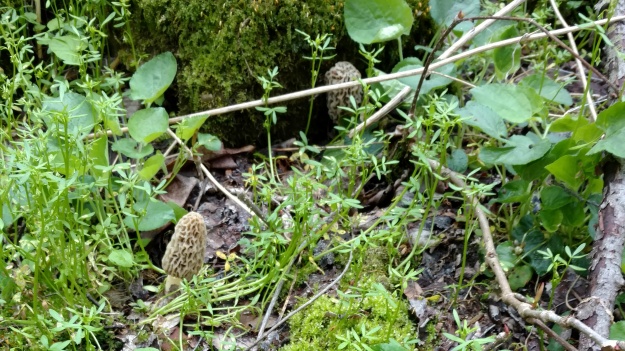
I am by no means an expert at mushroom hunting (or “mushroom looking” as my youngest son says), but I have learned a few things along the way and seem to have pretty consistent luck. I don't know what I enjoy more — eating the delicious morels after a long day of looking or spending time in the woods with my family and watching how much fun the kids have just finding them. Either way, here are some steadfast rules that good mushroom hunters and I try to stick to when mushroom hunting.
Gear You Need For Morel Mushroom Hunting
Mushroom hunting — or anything in the outdoors — is supposed to be fun. I use specific gear when I mushroom hunt, for several reasons. First on the list is personal protection. I really like the Bug Blocker sprays. First, the night before we go, I will pre-treat all of our clothes with Bug Blocker for Ticks. With all of the nasty diseases ticks carry around, the last thing I need to deal with is one of them biting my kids. I also constantly carry a bottle of Bug Blocker mosquito spray for obvious reasons. One quick dose of this aerosol spray will keep us all safe from mosquitoes for an entire mushroom trip.
I tend to hunt wild mushrooms on properties shared by other mushroom hunters. Sometimes I get there first, but usually, I don't and am left picking the ones nobody else can seem to get to. All this foot traffic leaves me to beat through the brush that others passed by. Mushroom hunters who search out public land can be rough on clothes. That’s why I love to wear my durable gear while hunting morel mushrooms.
I also like nature-colored or camo gear for their ability to help me stay hidden. Probably my best mushroom spot is right next to a very popular stretch of road. I know it sounds crazy, but I like to keep a low profile when mushroom hunting in the early spring. All the while, oblivious passersby have no idea what little gems are hidden right there, feet away from a public sidewalk. Pants and long sleeves also protect me from poison ivy, which seems to like to grow near mushrooms. And like I said, I often get the leftovers, so I can’t be afraid of poison ivy patches either.
Finding morels can be fun with the family. Everyone should be careful when reaching in and around logs and tree trunks. The warm weather brings out wild mushrooms, but snakes are stirring, too. Copperheads frequent the same areas that mushrooms thrive in. Cautious mushroom hunters stay alert and have little to worry about. Bring a couple of buckets or onion sacks and a knife and you should be good to go.
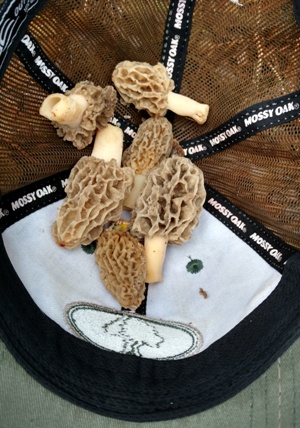
When Do Morels Bloom?
The first hunting tip to understand when morel mushroom hunting is how dependent they are on good weather. The first mushrooms to show each spring are the black morels. Start to look for blacks at the end of April or beginning of May, after at least seven straight days of above-freezing temperatures. Ideally, a couple of days with some rain and 50-degree temperatures at night are perfect to get things fired up. If there are six straight days of no freezing, and then it freezes on the seventh day, the cycle starts over. It's really very important that the soil temperature is right or the mushrooms won't pop up. A good indicator of proper soil temperature is dandelions. As pesky as those things are, they can be a mushroom hunter's best friend. When the dandelions are blooming, get ready. When they start going to seed, start looking for wild mushrooms.
False morels will typically bloom a few weeks before true morels. The exact timing depends on the area of the country you're in and the weather. A false morel resembles true morels, but in some cases can make you sick or worse. It pays to do a little research before you go mushroom hunting since it can help you avoid a bad stomach ache later. Seasoned mushroom hunters have no problem finding true morels and a trip with them can teach you a lot.
MOREL RECIPE: ELK MEDALLIONS WITH WILD MOREL CREAM SAUCE
Where to Look for Morels
One of the most frequent hunting tips asked for is: Where do you look for true morels? You can find them on private or public land. I always begin looking for mushrooms near dying trees such as elms, ash, apple and generally any softwoods. Ash is the exception to the rule, but for the most part, mushrooms feed off decaying root material of softwood trees. The best advice is to find dying trees that haven't quite shed their bark yet. Start by looking on the southern edge of these trees because that is where the soil will be the warmest from the most direct sunlight exposure. Too much heat isn't good for finding morels either, so make sure to always make a complete circle around the tree when looking, and don't neglect the little nooks and crannies. For instance, areas under logs might grow some giant mushrooms where they can remain moist and still maintain a proper soil temperature. Once mushrooms are located on the southern side of the tree, they will continue to grow around the entire tree throughout the season as soil temperatures change, so be sure to come back and keep looking. Generally, the black morels show up first followed by the “half frees” and then the grays followed by yellows or whites. And, lastly, the giants. Black morels tend to grow rather sporadically whereas the others might grow in clumps. Many times people don't even find blacks because they start looking too late.
Another area where mushroom hunters search for morels are burn areas. Often public lands like national parks, state parks and even national forests will conduct controlled burns. These burn areas often produce bumper crops for mushroom hunters. It seems the crisper the burn area, the better. Even an out-of-control forest fire can result in wild mushrooms growing in the burn area. Often, the morel mushroom is the first sign of life after a forest fire or controlled burn.
When the first wild mushroom is located, everyone gathers around to thoroughly look it over. I find that the first one is often hardest to find. Once we see that first one, our eyes become acclimated to them again and the rest seem to pop up out of nowhere. We cut or pinch the mushrooms, careful to not bring any more dirt in the sack than we need to. I have heard if the mushroom is cut delicately enough, the organism below the soil may produce more fruit. Each kid gets their own plastic mesh onion sack to collect their mushrooms and when a kid finds one, we all really celebrate. If the kids are having a hard time finding morels, I'll find a few and call them over. I don't tell them that I located any, but rather just tell them to start looking close in the new area. Usually they pick right up on them, and they get added to that child's bag if there's a friendly competition going.
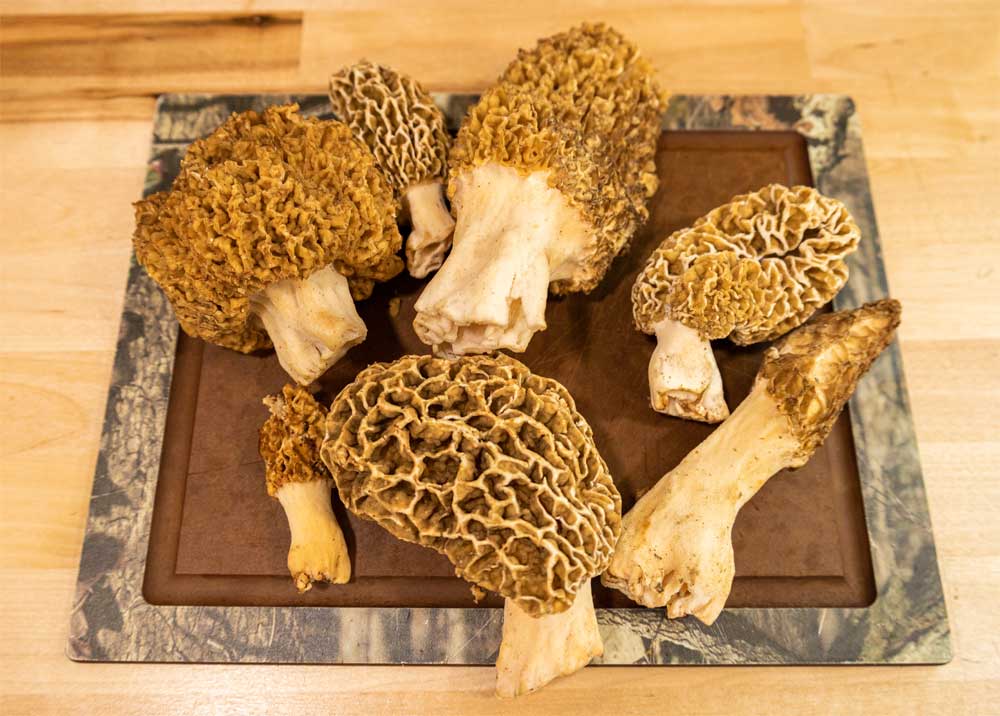
When we return home, there is usually no debate about what to do with the incredible edible mushrooms. My wife will immediately wash them and plan a dinner around the tasty treats. If we do have too many (like that's a real problem — too many morel mushrooms!?) and we can't eat them all in one sitting, we will keep them dry in the refrigerator to eat the next day or share with friends and neighbors. We found so many last spring that we experimented with how to best preserve them for the winter. My favorite way is to slice the mushrooms lengthwise, wash them and dry them in my food dehydrator. They will shrivel up to pretty much nothing and are quite easy to store in a Mason jar with a screw-on plastic lid. I've also vacuum-sealed them fresh as well as dried and I haven't met a morel yet I didn't like! Like I said, it's not often that we have too many, but when we are blessed with a bountiful pick, I do like to save some for winter.
So get out with your family this spring and find some mushrooms. You don’t have to be an expert to find wild mushrooms. You just have to be willing. For many families, finding morel mushrooms from early to late April is as exciting as their annual Easter egg hunt. For my family, the incredible edible mushroom is much tastier table fare. Make the time to get out this year and try them yourself. You will be glad you did.
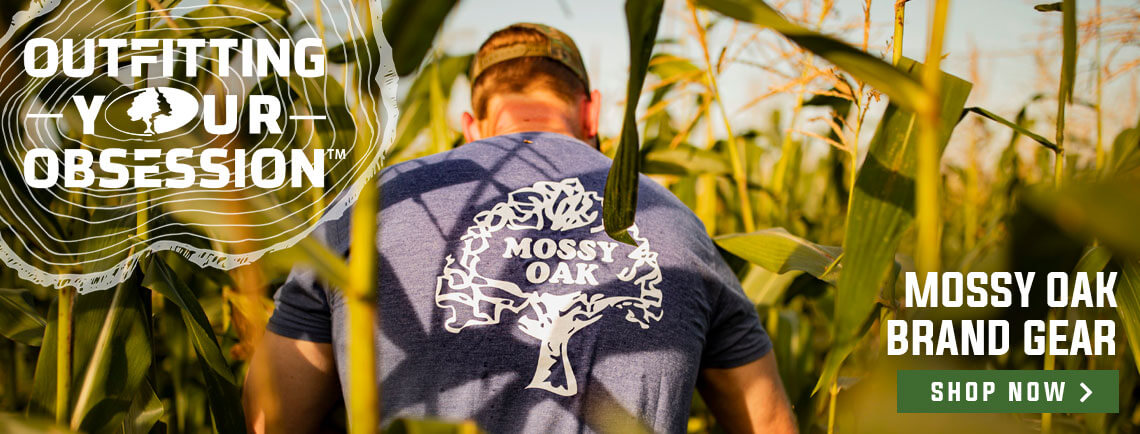
- Share This Story
Trending Gear

Latest Content
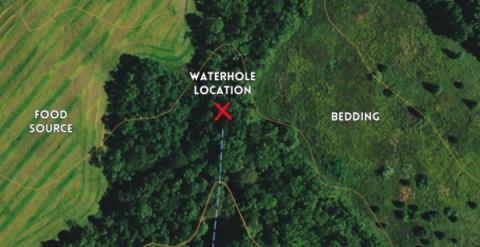

Public Tours every Saturday between 4/13 - 6/15 2024.
Private Tours - Year Round
Whidbey Wild Mushroom Tours

Click the video below to get a glimpse!
Welcome to Whidbey Wild Mushroom Tours! Thanks for stopping by. We strive to facilitate the fundamental learning of a sometimes culturally daunting subject: Mushroom foraging! There are places in the world that have kept this knowledge alive but in North America, it seems to be as hidden as the mushrooms themselves. On this site you will find information about the tour, an introduction to your guide, tour prices, and an inspirational photo gallery to get you pumped about the fungus among us! We are so excited to share our passion for mushrooms with you. We look forward to seeing you on our next tour!
Testimonials:
Had an AMAZING time with Travis on our foraging trip! We were able to find some mushrooms that we will be preparing for dinner tonight. Travis is incredibly informed, it’s almost astounding how much information he knows just off the top of his head. We were able to learn a ton about foliage around this area as well. A huge bonus is Travis’s personality and sense of humor, felt like we were hanging out with a friend the entire time. We HIGHLY recommend this if you’re a nature lover and visiting the area :) ~Daniela C.
Went on a public group tour with Travis and left with a fresh new lens when exploring the PNW forests. Travis is a wonderful, passionate, and informative teacher who is very knowledgeable and experienced with the local grounds. I learned so much in a short time frame and had a blast. I can't recommend this tour enough and look forward to joining another tour in the near future!
Travis is extremely knowledgeable and passionate about mycology. I have attended many wild foraging classes all across the US and this was by far one of the best. I would recommend this to any aspiring forager or anyone wanting to know more about wild edible mushrooms. ~Terry W.
My wife and I had a private tour with Travis this week. He was absolutely amazing! It was like a PBS show live. He was so professional, fun, and informative. He knows more about mushrooms than I thought possible, yet he explains in a way that anyone can understand. I highly recommend any of his tours if you want to learn how to safely identify and harvest mushrooms in WA state or even on the West coast. ~Craig B.
Travis is very knowledgeable about mushrooms and provides a classroom component and a field experience with each class. He’s clearly an expert, but explains each point and detail so everyone can understand. The focus is on edible mushrooms and those which should be avoided so that you gain skills to have the confidence to go out and pick tasty mushrooms. And, talk about tasty! ~Sue E.
I took a private tour with my husband and almost 2 year old daughter, and each one of us had an amazing time! Travis was incredibly knowledgeable not only about the mushrooms and molds in the local forests, but the other flora and fauna as well and was quick with an answer to every question. We got to learn tricks to do with certain mushrooms that kids would love, and foraged a good amount of edible ones to take home as well by the end of the tour. Would definitely recommend! ~Kayleigh C.
As Seen In:

MUSHROOM SPOT
Mushroom Spot

Find mushroom locations on the map, navigate, and keep track of your spots

Mushroom Spot is the perfect companion for all mushroom enthusiasts. Whether you're a seasoned pro or just starting out, this app will help you find the best picks.
With its easy-to-use interface and powerful features, you'll always be able to find new mushrooms around you and share your favourite mushroom spots with friends.
We’ll help you open the world of mushrooms and outdoor adventures.
Follow us for updates!

Informative map
Mushroom spot makes mushrooms findable. We show spots with meters accuracy where to go mushroom picking providing essential information for a successful foraging experience.
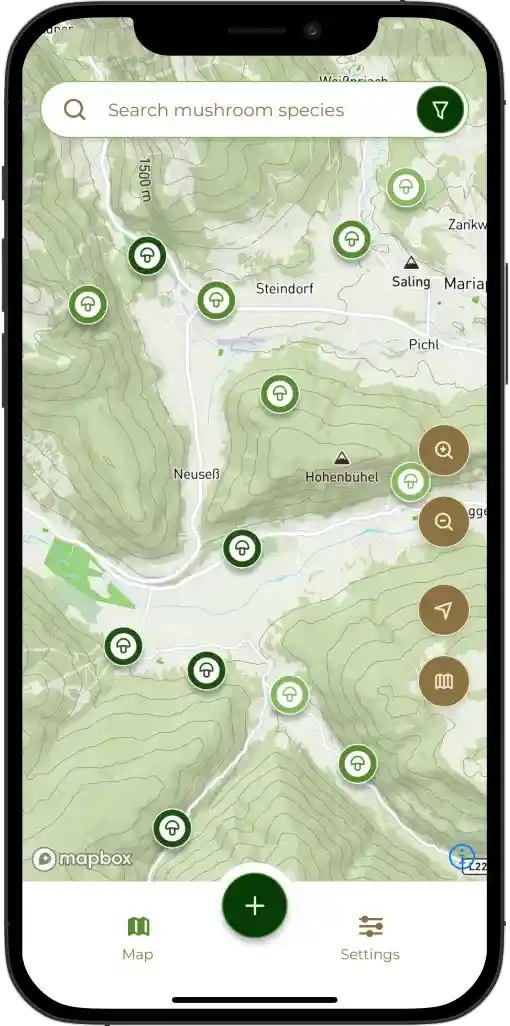
Advanced search & filters
Our app offers a wide range of search criteria and filters, allowing mushroom enthusiasts to easily locate ideal spots for foraging wild mushrooms and makes mushroom hunting for beginners easier to start.
Keep track of your own spots
Log all your findings in one place, and share mushroom spots to inspire and inform fellow mushroom pickers.
.webp)
Mushrooms seasonality
Mushroom Spot provides information on when is the best time to go mushroom hunting during the year and will tell you what mushrooms are growing right now.
Find your way to mushroom spots using your favorite navigation apps. Our mushroom hunting app allows you to open the location in Google Maps, Apple Maps , or another map service installed on your phone.
.webp)
FAQ: All that you wanted to know about mushroom hunting with Mushroom Spot
How do we know where mushrooms grow over the past century, diligent researchers and passionate naturalists have dedicated themselves to mushroom hunting and documenting mushroom observations. their tireless efforts have resulted in a vast collection of valuable data. our platform offers the most intuitive and user-friendly interface, enabling easy access to the mushroom map. by utilizing our mushroom hunting app, users can dive into the world of mushroom observations and explore the fascinating world of mycology with utmost convenience., how accurate are spot locations our data contains accuracy for most of our mushroom spots. most of our spots have an accuracy of under 100 meters. this means that the mushrooms you are looking for will grow within 100 meters of the spot specified on our map. each mushroom spot has information on how accurate are the spot coordinates., i don't know much about mushrooms. is mushroom spot useful for me if you're new to mushroom hunting and don't know where to go mushroom picking, the mushroom spot app could be just what you need. it's designed for beginners like you who want to explore mushroom hunting in their area. with features tailored for newcomers and information on local mushroom spots, it's a great tool to kickstart your mushroom hunting journey., in which countries is mushroom spot available australia, austria, belgium, canada, denmark, estonia, finland, france, germany, japan, lithuania, mexico, netherlands, norway, new zealand, russia, spain, sweden, switzerland, ukraine, uk, usa, in which languages is mushroom spot available we are currently supporting english, finnish, russian, swedish and norwegian., mushroom spot is not available in my country. what can i do we are currently available only in countries where we have scientific data about where to go mushroom picking and when is the best time to go mushroom hunting. as our project continues to grow, we kindly request you to provide us with information about the countries where we should consider establishing our app in the future. it's possible to do this within the contact form on the website or directly through the app. your input will greatly contribute to our decision-making process as we plan our next steps..

There are three of us behind the Mushroom Spot app: Roma, Ruut, and Sofia. Based in Helsinki, Finland 🇫🇮, we're on a mission to make an app that will help you in each step of your mushroom-hunting journey.
Picture this: two years ago, during one of our unsuccessful mushroom hunts, a lightbulb moment struck us – let's create a mushroom map that shows you exactly where to forage. And voila, Mushroom Spot was born.
Get in touch
Thanks for submitting!
Privacy policy
Matador Original Series
How to hunt for mushrooms in oregon's coastal rainforest.
L ately, even more of us have begun cooking and turning our attention to the outdoors. Mushroom hunting is an activity that combines these two loves — cooking and spending more time savoring the healing power of nature — and Oregon’s coastal forests are the ideal place to pursue it. Here, you’ll find an ecosystem fed by frequent rain and moderate temperatures, where enormous evergreen trees thrive and support wildlife, mosses, and several types of edible mushrooms. As this Oregon mushroom guide will show you, mushroom hunting takes hiking to a whole new level.
Hiking taken to a new level

Photo: Laszlo Dobos /Shutterstock
Hiking on wooded paths, you feel enveloped by verdant life, but when you step off the trail, your sense of immersion deepens. The hunt for delicious fungi draws you up and down hillsides, through the tender branches of young western hemlocks, and around thick, long-leaved ferns. You feel the forest under your feet. You smell it more fully. You see the forest as it truly is, from the inside.
In the heart of the largest temperate rainforest in the world, Douglas firs, cedars, and other evergreens, along with alder and bigleaf maple, support a lush, diverse ecosystem. The needles, leaves, and cones that fall from trees and decay into rich humus on the forest floor become rich, earthy-scented duff, which provides sustenance to a variety of wildlife. Just under your feet, decay feeds regeneration. When you reach down and feel and smell this earth in search of mushrooms, you’re encountering the stuff of life itself.
Where, when, and how to hunt Oregon mushrooms
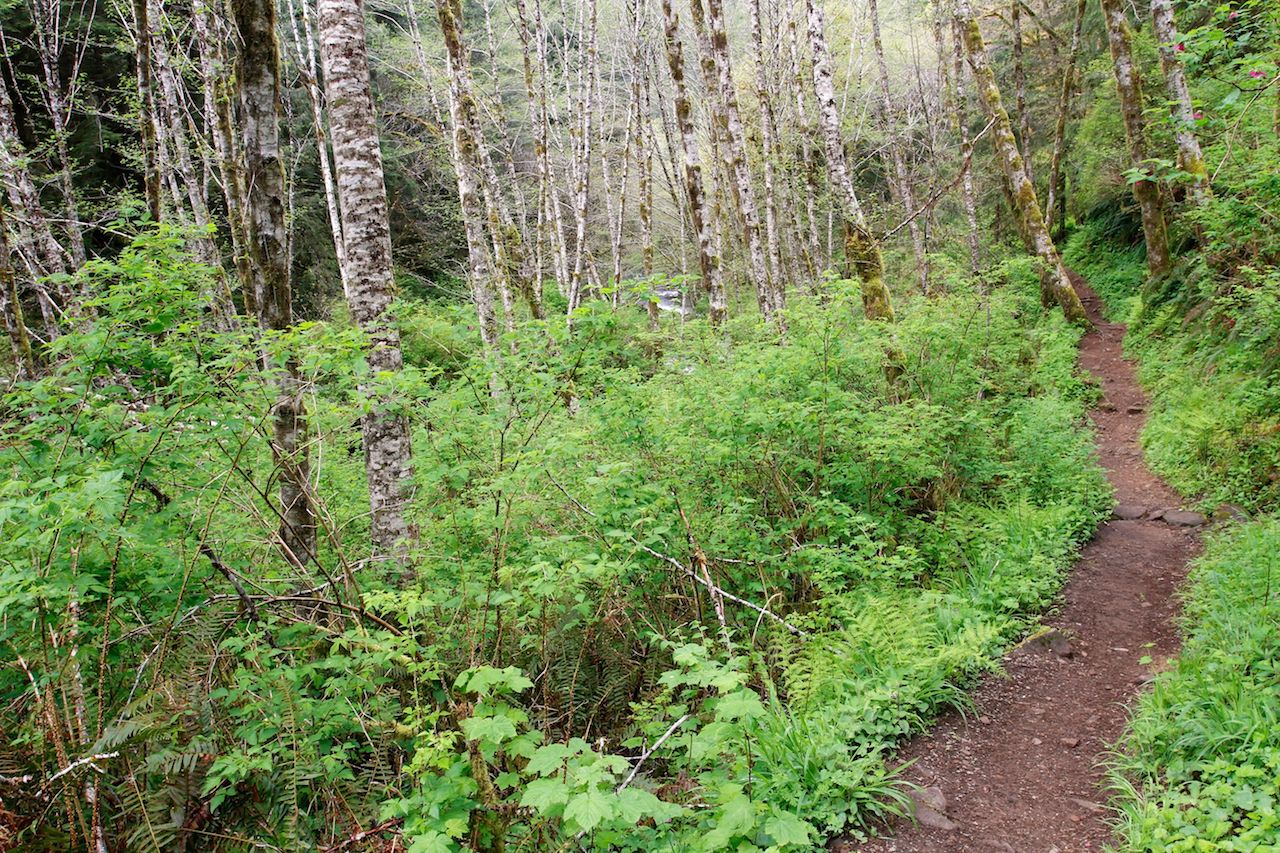
Photo: Robert Mutch /Shutterstock
The Tillamook State Forest and Siuslaw National Forest encompass large swaths of land where mushrooms are found. Rainforest extends from the edge of the coast up through the coast range, all of which is prime territory for fungi. If you ask experienced foragers where to go, they’ll be quite helpful in narrowing your search, but they usually won’t tell you about any precise spots. This is because mushrooms sprout up in the same patches of ground every year, so hunters are hesitant to give away their hard-won knowledge.
Anyway, it’s more fun to try to find your own spots. Consulting maps and satellite images, and looking for remote roads that traverse wild forest, can yield unique off-trail experiences. Lightly used hiking trails are also a great place to start, not only because mushrooms are easier to find but also because of the calm, natural solitude such excursions afford.
It’s best to go mushroom hunting without expecting to find dinner. People who go out hoping to encounter edible mushrooms on their first try may be disappointed. If you’re looking at the right time, you’ll almost certainly find fungi, but there’s a good chance you won’t be able to identify them — or, if they can be identified, they often aren’t edible.
Mushroom hunters are content to be in the forest, encountering its smells, sights, and sounds. By engaging in the hunt, your relationship to the forest changes. Looking at the ground, you’re more likely to find massive slugs and all variety of crawling invertebrates. Looking up, the forest entirely surrounds you.
Timing can be tricky. In general, the best season for finding mushrooms in the Pacific Northwest is between September and November. However, different mushrooms fruit at different times, and even mushrooms of the same variety in the same location will fruit on their own time from year to year, dependent on weather and other factors.
For visitors to the region, timing depends a lot on travelers’ overall plans for the trip and on their tolerance for rain. To be honest, anyone visiting a Pacific Northwest coastal forest in any season should be prepared for at least some rain. In September, visitors are more likely to enjoy some sun, but a lack of precipitation could mean there are few mushrooms. A visit in October or November is more likely to yield mushroom sightings, but there’s also a significant chance for several days of rain in a row.
Oregon mushrooms hunting safety and information

Photo: Tuk sunchild /Shutterstock
We can’t overstate the importance of this: A few types of mushrooms can kill you. Many others can make you sick. Consult the safety information below, and never eat a mushroom unless you’re absolutely certain of your identification.
Yet while the risks of eating wild mushrooms can be quite serious, people are too often scared away from hunting. Several mushrooms are easy to safely identify. Some basic caution and preparation can help to keep you safe.
The United States Department of Agriculture’s Agricultural Research Service announced this year that it had developed a test strip that can determine whether a mushroom contains potentially lethal amanitin toxins — and even whether someone has ingested them. While these strips should be available soon, they don’t test for other dangerous toxins, so they shouldn’t be relied on alone.
Your best defense against mushroom poisoning is a good guidebook and, if possible, help from a more experienced hunter. All That the Rain Promises, and More by David Arora is an incredibly useful text. Its beautiful photographs and anecdotes from mushroom hunting enthusiasts are a joy to read. It’s such a good book that any forest-lover will enjoy it, even if they’re not yet actively hunting or planning on eating fungi.
The Oregon Mycological Society , based in Portland, is one of many organizations and resources for learning about mushrooms. Their annual fall mushroom show is a great place to learn and experience mushrooms, and could be a good event to plan a trip around. Finding mushrooms at farmers markets can also be a great way to see, smell, and taste edible varieties and chat up experienced foragers. Some mushrooms, like the Matsutake, can best be identified by smell, so encountering it at a show or a market can help to make identification much easier.
Mushrooms you can find in Oregon
Chanterelles.

Photo: Magic Stocks /Shutterstock
Chanterelles are an iconic edible mushroom and can be found on the forest floor all over the Pacific Northwest. Their wavy, conical shape is unique and different from the archetypical round-capped mushroom. They have a subtle, elegant, earthy, and an occasionally almost fruity flavor. Cream of Chanterelle soup is a classic recipe. However, you may prefer to eat chanterelles on their own with just a little butter or oil to enjoy the subtleties of their flavor and texture.
Cauliflower mushroom

Photo: Pavel Veber /Shutterstock
The cauliflower mushroom looks, from a distance, like a cauliflower. Up close, its slightly yellow flesh looks more like egg noodles. Unlike the Chanterelle, Cauliflower mushrooms grow from the wood near the base of conifers, especially pine. As the largest mushroom on this list, it ranges from cauliflower-sized up to an incredible three feet in diameter. It should be cooked thoroughly to moderate its chewy texture and can be added to a variety of dishes.
Lobster mushroom
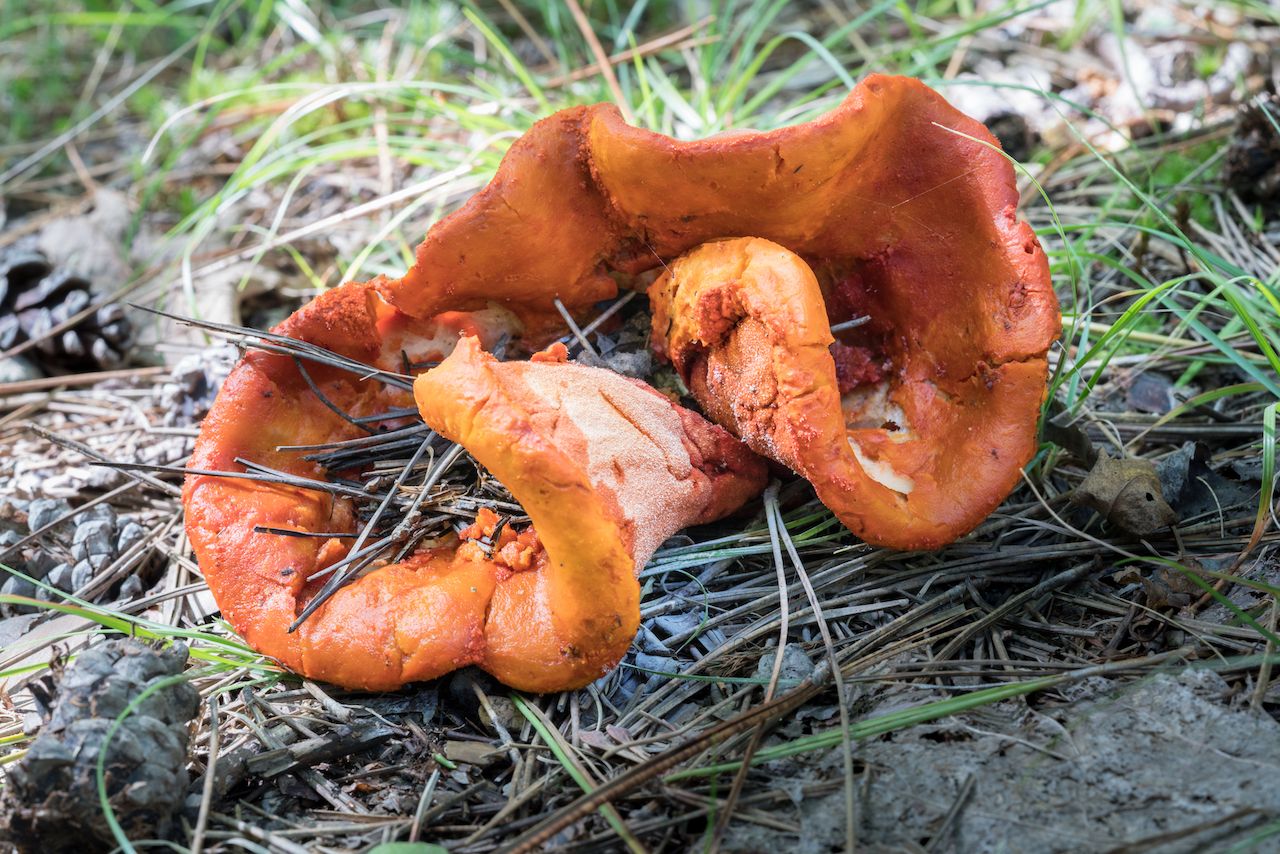
Photo: Kimberly Boyles /Shutterstock
The lobster mushroom usually has a lobster-like color but is sometimes a deeper red or even slightly purple. It’s one of the few mushrooms that is actually a parasite, feeding on other mushrooms and engulfing them. To the untrained eye, a Lobster mushroom can sometimes look like a chanterelle due to its inverted-pyramid shape and orange color. You can distinguish it from the chanterelle by its gills. While the chanterelle has forking gills, the Lobster mushroom has unforked gills or no gills at all. With its dense texture; mouth-feel; and slightly nutty, sometimes buttery, flavor, it’s delicious when sauteed.
Oyster mushroom
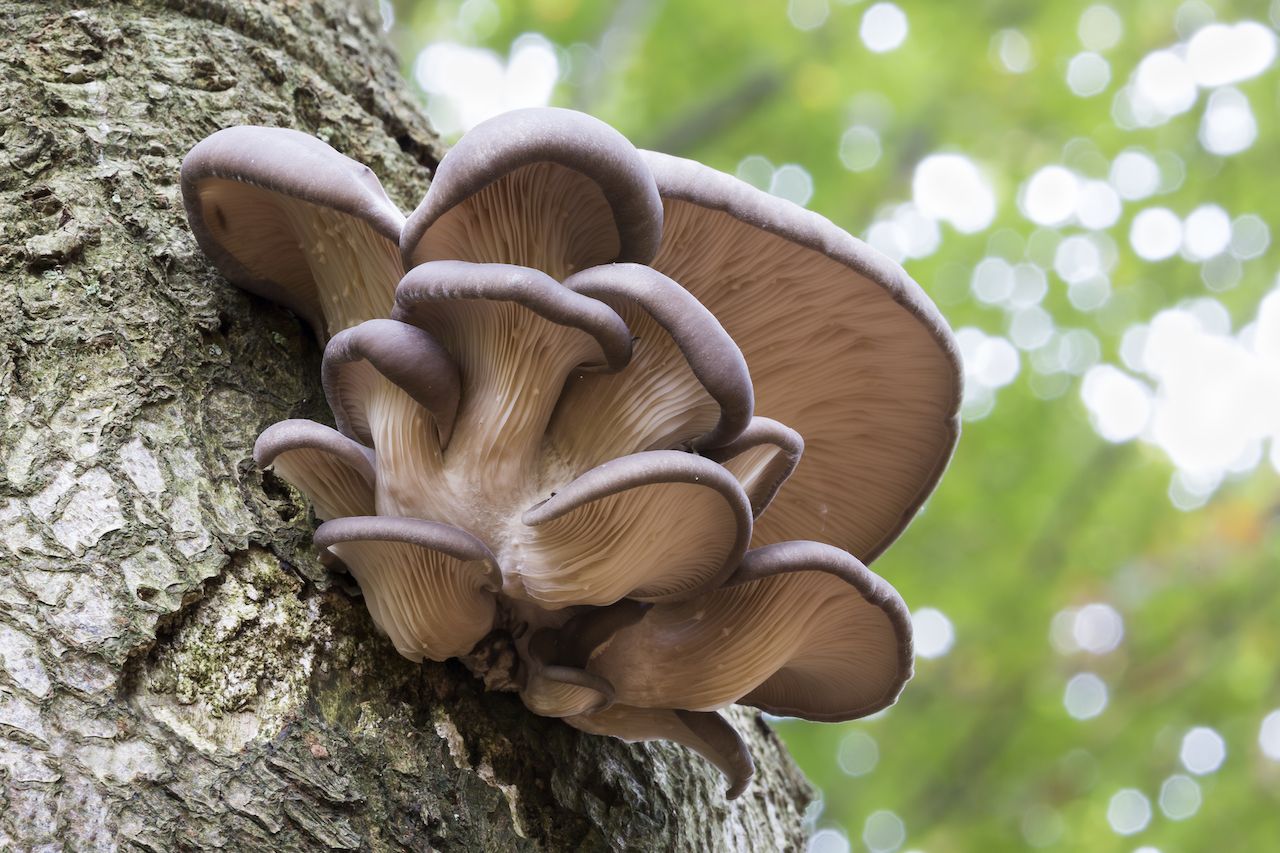
Photo: Gertjan Hooijer /Shutterstock
True to its name, the oyster mushroom can taste mildly of the sea. It grows like shelves on dead trees or stumps, with its stem perpendicular to its cap. It can be grown commercially on dead wood but always tastes better when you find it yourself.
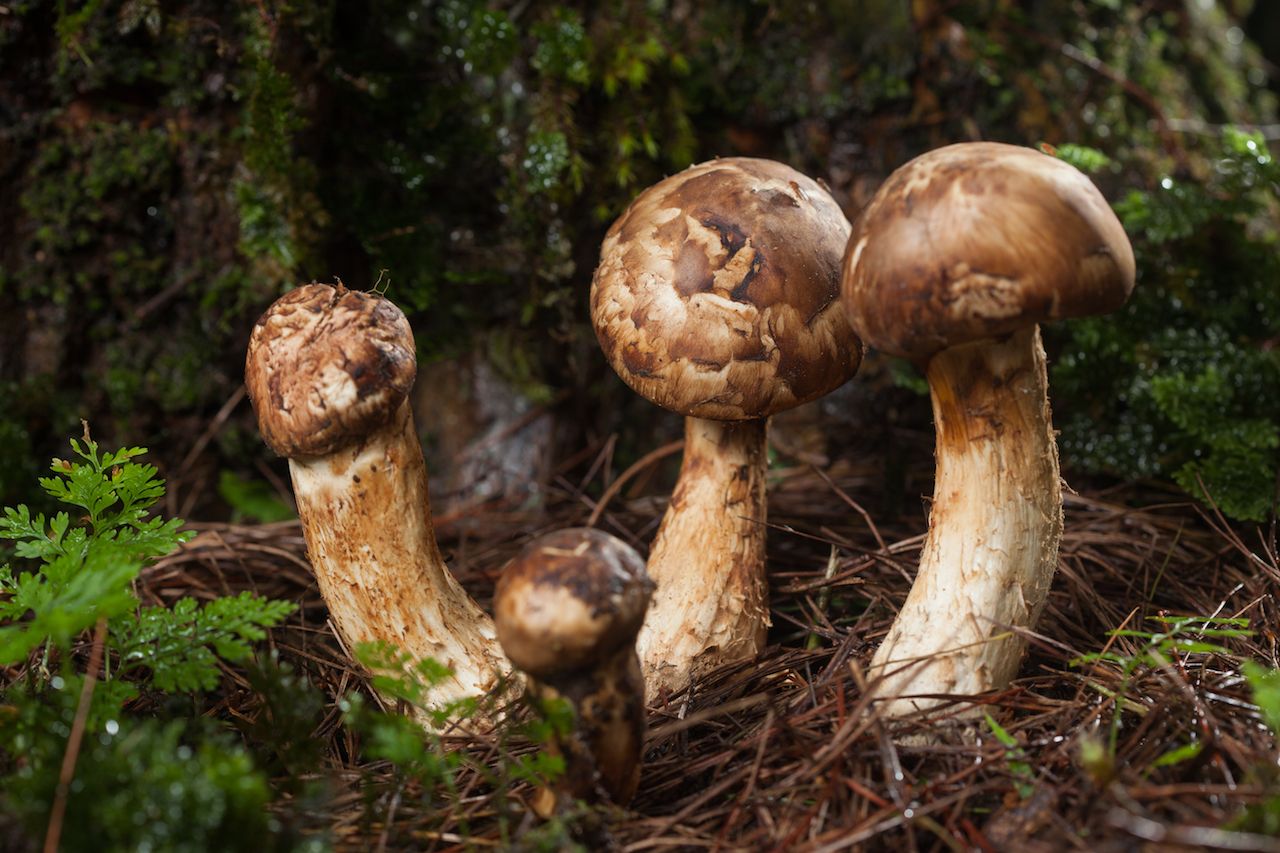
Photo: puttography /Shutterstock
A version of this article about mushroom hunting was previously published on April 9, 2019, by George Zamzow and was updated on August, 25, 2020, by Outdoor editor Noelle Salmi.
More like this
Trending now, this road trip expert’s free map of 429 national park sites will vastly improve your us travels, a first-timer's guide to visiting mount fuji, japan, this list ranks every national park according to data, how to get a reservation at the 10 most popular national parks for tent camping, death valley vs. joshua tree national parks: which is best for you, discover matador, adventure travel, train travel, national parks, beaches and islands, ski and snow.
We use cookies for analytics tracking and advertising from our partners.
For more information read our privacy policy .
Matador's Newsletter
Subscribe for exclusive city guides, travel videos, trip giveaways and more!
You've been signed up!
Follow us on social media.
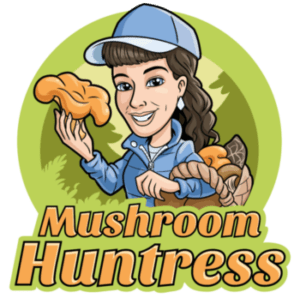
What Items Will I Need On My Mushroom Hunting Trip?
Items to pack for a mushroom foraging trip.
Before dashing into the woods in search of mushrooms, make sure you’re bringing everything you need. Being unprepared leads to find that can’t be foraged, smashed mushrooms, and a frustrated forager.
Here’s what you need:
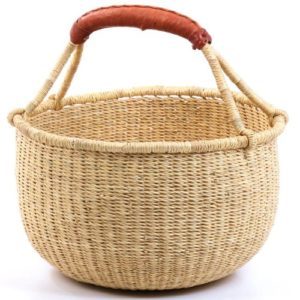
- A Basket or Bucket
The classic woven basket is still the best choice for mushroom foraging. It holds a lot, is lightweight, and doesn’t squish the mushrooms. Generally, there is enough room to separate the mushrooms by size and weight so they can be transported safely. The downside of the basket is it can be awkward to carry, especially when trekking through dense woods.
For specialty mushroom foraging, like for chicken of the woods, a couple of gallon-size buckets also work well. The exact vessel needed really depends on what you are foraging. If you’re seeking a specific species, bring a carrying vessel that ensures the mushroom won’t be damaged during transport. For a wide-focused foraging trip, the basket is best because it is prepared for many finds.
Bolga Hand-Woven Market Basket
Handcrafted SeaGrass Basket
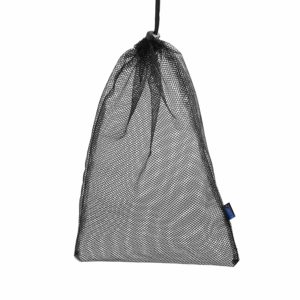
- Paper or Mesh Bags
These are to store and separate the different types of mushrooms. Some species are extremely fragile, and combining them with a larger species will destroy them. Black trumpets, chanterelles, and morels, in particular, are easily damaged.
Paper bags allow the mushrooms to breathe, which is vital to their preservation. Mesh is also popular because spores escape through the holes and, hopefully, spread around the forest, creating more mushrooms. Avoid plastic bags; they cause the mushrooms to sweat and degrade quickly.
You can re-use the mesh bags that fruits and vegetables often come in, or buy ones specifically for foraging.
Foraging Mesh Bags
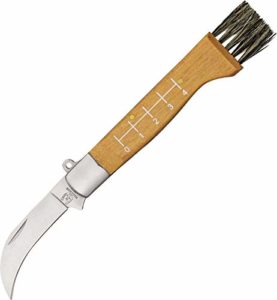
- A Foraging Knife
A jackknife or small blade is sufficient for the majority of mushrooms. Morels, chanterelles, and oyster mushrooms have small easy-to-cut stems. For larger mushrooms, like chicken of the woods, or puffballs, a bigger knife makes the job easier. If you’re new to foraging, don’t worry about a specific knife. If you’re hooked on mushroom hunting, it’s worth it to indulge and get a proper foraging knife.
The curved foldable blade and boar’s head bristles of these two popular foraging knives are ideal for cutting and cleaning mushrooms:
Sagaform Mushroom Foraging Knife
Rough Ryder Mushroom Foraging Knife
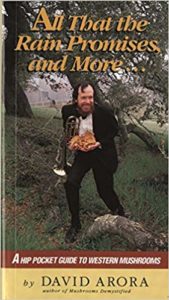
- Identification Book or Expert Friend
Since you’ll be carrying it trekking through the woods, choose a lightweight identification book. A small book or fold-out guide is ideal. Better yet, invite a friend who knows mushrooms. A friend is much better company than an ID book, too.
These are not specific to mushroom foraging but should always be included in any trip. Water, bug repellent, map, GPS or compass, and, of course, snacks. Don’t ever go into the woods or on a hike without these essentials. A short hike can quickly turn into a day-long adventure, especially when mushroom foraging! Wear proper, waterproof hiking boots or shoes, and dress appropriately for the weather. Always be prepared.

Mushroom Hunters Stumble Upon Mysterious Stone Sculpture in Thai Forest
While the artwork’s age is still unknown, some think it depicts the mother of the Buddha
/https://tf-cmsv2-smithsonianmag-media.s3.amazonaws.com/accounts/headshot/Sonja_headshot.png)
Sonja Anderson
Daily Correspondent
:focal(853x479:854x480)/https://tf-cmsv2-smithsonianmag-media.s3.amazonaws.com/filer_public/ee/c2/eec2e4c1-db40-4b77-a8d6-b7726a22a980/441381717_781736717472697_7355291501628770032_n_1.jpeg)
Earlier this month, three Thai villagers were searching for mushrooms in the Dong Yai Wildlife Sanctuary—and they found much more than fungi. Hidden in the lush jungle, the trio stumbled upon a sculpture of a woman carved into stone.
“Went mushroom hunting and found this,” Pramul Kongkratok, one of the villagers who found the sculpture, wrote on social media, according to the Nation Thailand ’s Preem Nattanicha. “I’ve lived here for so long, but just learned we have this around here. It’s a blessing.”
Kongkratok reported the sculpture to Thailand’s Department of National Parks, Wildlife and Plant Conservation , which sent officials to investigate. As the department writes in a translated Facebook post , the carving is located near the Cambodian border in the Buriram province’s southernmost district. While officials initially announced that the piece might be ancient, its age is currently unknown. An investigation by Thailand’s Fine Arts Department is forthcoming, though some theories about the carving’s origins have already been presented.
Depicted from the legs up, the sculpted woman emerges from the slanted face of a boulder on the forest floor. She sports long hair and traditional dress—including a full skirt and heavy neckwear. Her left arm appears to be holding a branch above her head, as All That’s Interesting ’s Amber Morgan reports. Some think the sculpture dates back to the era of the Dvaravati , a Southeast Asian kingdom that flourished between the 6th and 11th centuries, and that it depicts Maya Devi , mother of Siddhartha Gautama —the Buddha.
However, not everyone agrees with this assessment. Chedha Tingsanchali , an art historian at Silpakorn University in Thailand, tells the Nation Thailand that the sculpture may not be so old.
“The sculptor was someone who saw ancient art, like ancient Indian art, and imitated it,” he says, adding that the sculpted woman’s facial features (such as eyebrows and lips) don’t match examples from the Dvaravati period. Additionally, “Maya Devi holding a [branch] of a pipal tree was never known to people living in [the region] during Dvaravati before the 16th century.”
The pipal tree— also known as a sacred fig, bodhi or peepal tree—is native to Southeast Asia and revered by Buddhists and Hindus. As officials write, the newly discovered carving is located less than a mile from a historic Buddhist temple, Wat Pa Kha Kra Jiao. Additionally, a group of monks known for their artistic skills did occupy the area just a few decades ago, per Thai PBS World .
Until experts finish their study of the sculpted woman, her origin and identity remain a mystery.
Get the latest stories in your inbox every weekday.
/https://tf-cmsv2-smithsonianmag-media.s3.amazonaws.com/accounts/headshot/Sonja_headshot.png)
Sonja Anderson | READ MORE
Sonja Anderson is a writer and reporter based in New York City.
Search site
Discover more, discover brands, discover & compare, best mushroom drinks: 5 top mushroom beverages for immune support and health benefits, if you follow the world of holistic remedies, you’ve probably heard of mushroom drinks, mushroom powder, and mushroom extracts. many people struggle with the rush of their morning coffee and might feel sick after consuming it. coffee made from functional mushrooms can provide the same benefits as regular coffee without the tummy troubles some might….
If you follow the world of holistic remedies, you’ve probably heard of mushroom drinks, mushroom powder, and mushroom extracts. Many people struggle with the rush of their morning coffee and might feel sick after consuming it. Coffee made from functional mushrooms can provide the same benefits as regular coffee without the tummy troubles some might experience after a traditional cup of joe.
Feeling tired and getting sick often can be a drag. Good news—functional mushrooms like Chaga, Cordyceps, and Lion’s Mane mushrooms help with energy and immunity.
Top Mushroom Drinks With Beneficial Blends
- Best Overall Mushroom Coffee: Beam Super Latte
- Best Organic Mushrooms Drinks: BRĒZ Lion’s Mane 7.5 oz
- Best Tasting Functional Beverages: KoiCBD MusciMind Liquid Trip
- Best Mushroom Coffee for Focus: Everyday Dose 90 Serving Jumbo Bag
- Best Coffee Alternative for Immunity Boost: VitaCup Focus Ground Coffee
Understanding Functional Mushroom Beverages: Potential Health Benefits
These aren’t your ordinary beverages. They’re power-packed with mushrooms known for boosting immunity and energy. Imagine sipping on a drink that’s refreshing and enhances your health. Mushrooms like Chaga, Cordyceps, and Lion’s Mane play the lead roles here. They bring benefits like better immunity, more energy, and sharper focus. Mushroom powder, or mushroom coffee , can have a small amount of caffeine to perk you up without the crash later.
These drinks blend science with nature by using mushrooms praised for their medicinal properties. Whether it’s mushroom coffee infused with Lion’s Mane to kickstart your morning or a smoothie enriched with Reishi for relaxation, there’s something for every part of your day.
The idea is simple: mix these amazing fungi into daily drinks to make wellness an easy habit. You get delicious tastes and health perks likelike stress relief and cognitive support without swallowing pills or powders. Mushroom coffee can also give you the immune support you need to stay healthy.
1. Best Overall Mushroom Coffee: Beam Super Latte
Best overall mushroom coffee, beam super latte.

You’re hunting for a magic mushroom brew that packs a punch without leaving you jittery, and Beam Super Latte steps up to the plate. Imagine starting your day not just with any cup of joe but with one that’s been turbocharged with adaptogens, nootropics, and mushrooms. This isn’t your average caffeine fix — it’s a brain-boosting, stress-busting powerhouse. With only 1/3 the caffeine of regular coffee, it dodges the dreaded crash while lifting your focus and energy levels. It’s a blend of the best functional mushrooms, like turkey tail , Lion’s Mane, and Cordyceps.
Choosing Beam Super Latte means opting for more than sustained energy; it invites clarity and resilience into your daily grind. Whether you’re tackling an intense workday or running errands nonstop, imagine doing so powered by ingredients designed to support brain health and stress management—all from your morning coffee!
- Sustained energy boost
- Improved focus without the caffeine crash
- Stress support for a calmer mind
- Enhanced brain health
- May not be suitable for those sensitive to adaptogenic herbs
- 200 mg Lion’s Mane, 150 mg Turkey Tail, 100 mg Cordyceps, 100 mg King Trumpet
- 30 servings
- Flavor: Original
Shop Beam Super Latte today!
2. Best Organic Mushroom Drinks: BRĒZ Lion’s Mane 7.5 oz
Best organic mushroom drinks, brēz lion’s mane 7.5 oz.

BRĒZ Lion’s Mane stands out as the top pick for anyone seeking the benefits of functional mushrooms without any hassle. Imagine feeling more clear, motivated, and refreshed with just a sip. This vegan and gluten-free beverage is a game-changer with 2200mg of Lion’s Mane mushroom extract and sparkling hints of Italian lemon and Elderflower. Plus, it’s designed to fit perfectly into any lifestyle at only 20 calories per can and is completely free from THC & CBD, though they do offer those as well!. Partying while supporting your immune system has never been so easy.
Users have shared stories of how this drink transformed their daily routines. Unlike anything else on the market, it offers a natural boost in focus and mental energy. Combining high-quality ingredients supports mental clarity and delivers an unparalleled sensory experience with its unique flavor profile.
- Enhances clarity, motivation, and relief
- Contains 2200mg Lion’s Mane
- Infused with Italian lemon and Elderflower
- Vegan, non-GMO, and gluten-free
- May cause adverse reactions in individuals with allergies to mushrooms
- 2200mg Lion’s Mane per can
- Available in packs of 6, 12, 18, 24, 48 cans
- Flavors: Italian Lemon & Elderflower
Shop BRĒZ Lion’s Mane 7.5 oz today!
3. Best Tasting Functional Beverages: KoiCBD MusciMind Liquid Trip
Best tasting functional beverages, koicbd muscimind liquid trip.

Koi CBD Muscimind Liquid Trip grabs the third spot on our go-to list for a reason. Imagine getting a mood lift and energy boost without the jittery side effects of caffeine. This pocket-sized powerhouse does just that, blending 15mg of muscimol with a nootropic mushroom mix for an uplifting and serene experience that comes with immune support. It’s fast-acting, promising to kick in within minutes and offering an optimal 1-2 hours duration.
Users appreciate its ease of use—coming with a handy dosing guide—and how it fits seamlessly into any setting, whether you’re at home relaxing or out exploring nature with friends. Its natural formulation means you can expect all the benefits without any hangover worries the next day. It stands out for its efficacy and taste in flavors like Strawberry Watermelon and Blue Razz.
- Pocket-sized for convenience
- Fast-acting with optimal duration
- Muscimol + nootropic mushroom blend for enhanced effect
- Dosing guide included
- Potential for adverse reactions or interactions with other medications
- 15mg of muscimol + nootropic mushroom blend
- Flavors: Blue Razz, Strawberry Watermelon
- Available in Single, Four-Pack, and Ten-Pack
Shop KoiCBD MusciMind Liquid Trip today!
4. Best Mushroom Coffee for Focus: Everyday Dose 90 Serving Jumbo Bag
Best mushroom coffee for focus, everyday dose 90 serving jumbo bag.

Imagine feeling energized, focused, and stress-free without the coffee crash or bloat. The Everyday Dose 90 Serving Jumbo Bag combines Lion’s Mane and Chaga extracts with a proprietary coffee mix. This magic mushroom blend boosts your energy while promoting gut health and mental clarity—all with 80% less caffeine than regular coffee.
Whether it’s the light, creamy taste of roasted coffee with hints of chocolate that draws you in or the promise of calm focus throughout your day, this product stands out among functional mushroom beverages for immunity and energy boost. And if you’re ever not satisfied? There’s a flexible 45-day return policy to back up their confidence in giving you the best start to your day with every dose.
- Boosts energy levels without the crash of coffee
- Enhances clarity and focus
- Elevates overall mood and well-being
- Supports digestive health
- Potential sensitivity to caffeine for some individuals
- 2275 mg Proprietary Mushroom Blend
- 90 servings per bag
- Flavor: N/A
Shop Everyday Dose 90 Serving Jumbo Bag today !
5. Best Coffee Alternative for Immunity Boost: VitaCup Focus Ground Coffee
Best coffee alternative for immunity boost, vitacup focus ground coffee.

Imagine sipping on a coffee that wakes you up, sharpens your focus, and boosts your immunity. VitaCup Focus Ground Coffee combines the rich taste of medium-dark roast Arabica beans with the brain-energizing power of Lion’s Mane and Chaga mushrooms . Each cup of mushroom coffee is like a secret weapon for your brain, packing a punch with essential B vitamins and vegan D3 to keep both mind and body in top shape. Take care of your body with this mushroom coffee, which addresses the immune system without artificial ingredients or sugar. Despite all that, it still tastes good. Whether tackling work deadlines or powering through workouts, this coffee ensures you’re ready for anything.
With every sip, you’re getting more than just caffeine; you’re drinking health-enhancing antioxidants and fiber from nature’s most powerful mushrooms. Remember those mornings when you felt sluggish after two cups of regular coffee? Those days are gone. This blend helps maintain steady concentration levels without the crash—meaning more productivity and less procrastination.
- Medium dark roast with a sweet aroma and smooth texture
- Heavy-bodied with earthy notes
- Focus boosters: Lion’s Mane and Chaga mushrooms
- Strengthened immunity
- May not be suitable for those who do not enjoy the taste of medium-dark roast coffee
- Lion’s Mane and Chaga mushrooms plus Arabica coffee
- 6 bags, 4 bags, or 2 bags
Shop VitaCup Focus Ground Coffee today!
Benefits of Incorporating Functional Mushroom Beverages into Your Routine
Adding a beverage made from functional mushrooms to your daily routine brings lots of health perks. These beverages blend mushrooms like Chaga, Lion’s Mane, Turkey Tail, and Cordyceps. They help boost your immune system, giving you more energy and making it easier to handle stress. Furthermore, mushrooms contain beta-glucans, which help manage your cholesterol levels over time.
Drinking these mushroom-based elixirs also supports better brain function over time. Lion’s Mane is especially good for this. Plus, if you’re looking for a natural way to enhance your workouts or recover faster, look no further than Cordyceps-infused options.
You’ll enjoy a smooth increase in stamina without any harsh side effects common in traditional energy drinks. These choices are about keeping things balanced and healthy while giving your body that extra edge when needed.
Find The Mushroom Drink You Need Today!
Ready to boost your immunity and energy? Our top five examples can help you find the boost you need to start the day. These drinks pack a serious punch with benefits like improved focus and better health.
With options like subscribing for regular deliveries, you save time and money. Give these top picks a try—you won’t regret it!
1. What makes functional mushroom beverages good for my health?
Functional mushroom beverages contain nutrients, antioxidants, and adaptogenic mushrooms like reishi and lion’s mane. These elements work together to boost your immunity and energy levels. Plus, they’re often made following organic standards—free from GMOs and synthetic fertilizers.
2. Are there any dietary supplements in these drinks?
Many of these beverages contain herbal supplements such as Hieracium erinaceus (lion’s mane) or ganoderma lucidum (reishi). They’re designed to complement your diet with vital nutrients like selenium, vitamin D, and polyphenols that support overall health.
3. How do I know these products are safe and organic?
Look for certifications! Many functional mushroom beverages carry USDA Organic labels or have product certifications indicating they meet strict organic standards—meaning no genetic engineering or harmful chemicals were used in their production.
4. Is it easy to include these drinks in my daily routine?
Definitely—it’s super simple! Swap out your morning cup of joe with an organic coffee infused with adaptogenic mushrooms, or add a scoop of powdered supplement into your smoothie for an extra energy kick without altering the savory taste.
5. Do all functional mushroom beverages taste like mushrooms?
Not at all! In fact, many people are surprised by how delicious they find them. The brewing process often results in a rich flavor profile that masks the earthiness typically associated with mushrooms; some options even blend cacao into the mix for a chocolatey delight.
Related Content
- Exploring the Effectiveness of Mushroom Gummies: Do Mushroom Gummies Work
- Functional Mushrooms vs Psychedelic Mushrooms: Understanding the Key Differences
- The Top Mushroom Syrup: High Potency Magic Mushroom Syrups
- Where to Find Shrooms Near Me: A Guide to Locating Psychedelic Fungi
Share on social media:
Most recent.

Best Fish Oil Supplements: 5 Best Omega-3 Supplements With Potential Health Benefits

Best Weight Loss Gummies: 5 Best Dietary Supplements to Take on Your Weight Loss Journey

Strongest Kratom Strain: Potent Types Of Kratom Strains With Calming Effects
Explore categories.

Mushroom Hunters Discover Mysterious Stone Sculpture in Thai Forest
Three Thai villagers searching for mushrooms stumbled upon an intricately detailed stone sculpture of a woman in a forest.
“Went mushroom hunting and found this,” Pramul Kongkratok, one of the locals, shared on social media according to The Nation Thailand .
“I’ve lived here for so long, but just learned we have this around here. It’s a blessing.”
Kongkratok alerted the Department of National Parks, Wildlife, and Plant Conservation. They, in turn, contacted art and antiquities authorities to determine the sculpture's age and origins.
This discovery has sparked excitement and speculation among historians and locals alike.
Mysterious 1,800-Year-Old Statue Found During Car Park Construction
Theories and Speculations
Several theories have emerged regarding the sculpture's origins.
One prominent theory suggests it could date back to the 6th century, during the Dvaravati kingdom, which was located in modern-day Thailand near the Cambodia border—precisely where the sculpture was found.
However, the carving style does not match typical Dvaravati reliefs, such as those depicting musicians seated in a row.
Another theory proposes that the sculpture represents Maya Devi, the mother of Lord Buddha. This idea is partly based on the woman holding a branch of the Bodhi tree, under which Prince Siddharta Gautama meditated for seven days to attain Enlightenment.
Nonetheless, Maya Devi is rarely depicted alone and is usually shown lying down to illustrate the story of Buddha’s birth, casting doubt on this theory as well.
Local Artistic Influence?
Historically, artists from the golden age of Buddhist kingdoms in South Asia adhered to conformist carving styles, making this unique discovery stand out.
Interestingly, less than a mile from where the carving was found, there is a Thai Buddhist monastery, or Wat, inhabited by a group of artistically inclined monks, according to the Smithsonian.
This proximity raises questions about a more contemporary origin for the sculpture.
Regardless of its origins, the sculpture is a beautiful piece of art and a delightful reminder that the world is full of surprises.
Newly Discovered Ancient River May Explain How Egypt’s Pyramids Were Built
Mammoth Bones Discovered in Wine Cellar

- Share full article
Advertisement
Supported by
Where Royals Once Hunted in France, a Green Forest Welcomes Everyone
With its boulders, trails and proximity to Paris, the 50,000-acre Forest of Fontainebleau draws millions of hikers, rock-climbers, trail runners and forest bathers each year. Some worry that its popularity is taking a toll.

By Lindsey Tramuta
In popular imagination, France’s Fontainebleau is inextricably linked to its grand Château. But when I visit, I typically skip it entirely. Yes, the 1,500-room Château de Fontainebleau that was inhabited by French kings and emperors for eight centuries may seem the most arresting attraction in this region 37 miles south of Paris. Instead, it’s the surrounding forest that entices me to return again and again.
The 50,000-acre Forest of Fontainebleau was once prized by the royals for its exceptional hunting grounds. Now it is France’s second largest national forest and part of the Fontainebleau & Gâtinais UNESCO Biosphere Reserve , drawing 15 million visitors annually for bouldering, trail running, forest bathing and other activities, thanks to a topography that combines forested, wet and dry environments, and three massifs — Fontainebleau, Les Trois Pignons and la Commanderie.
“We have traces of mankind and engravings dating back tens of thousands of years,” said Sophie David, an archaeologist and Forêt d’Exception project manager with the National Forestry Office, or O.N.F. “That history is exceptional, but so is the 12,000 species of plant and animal life that make it among the richest sources of biodiversity in Europe.”
My introduction to the forest was 17 years ago, with my then-boyfriend and now husband, Cédric, an avid climber. I have spent the years ever since working to better understand the legendary place the French simply call Bleau.
A geological wonder
My first visit was to Les Trois Pignons, on the forest’s western edge and among the most compelling sites for first-timers. I expected towering old-growth trees, mossy and lichen-covered woodlands, and a palpable air of mystery. I hadn’t anticipated the extraordinary geological diversity that awaited me.
From the Roche aux Sabots parking area, Cédric and I walked about 20 minutes on footpaths covered in sand, leaves and pine needles to reach Les Sables du Cul du Chien (literally, the sands of the dog’s ass), an immense waterless beach with fine sand more fitting of the Mediterranean. Surrounded by Scots pine and birch trees, the expanse was dotted with sandstone boulders of various shapes, sizes and levels of difficulty for climbing and hiking. The most iconic, as Cédric pointed out, was the Bilboquet. Resembling a cup-and-ball toy and isolated in the middle of the sandy clearing, the rock looked as if it had sprouted by magic. Wonder-struck visitors were snapping photos and picnicking around it, as they are most other days we visit.
This area’s setting, like the rest of the forest, results from a distinctive geological history. More than 30 million years ago, a sea covered the swath of earth now occupied by the forest. When the waters receded, they left behind the sand dunes and sandstone rock formations, which — unsurprisingly — set off a big business in sandstone quarrying, beginning in the Middle Ages. In the 19th century, the material was used to build the Château’s iconic horseshoe staircase and was also transported along the Seine to be laid as cobblestones in Paris.
“That sandstone is a big part of what makes this forest such a mystical place,” said Lucien Martinez, an elite climber and the acting editor in chief of Grimper , a French rock-climbing publication.
Cormac O’Keeffe, 50, an Australian who has lived and worked in education in France since 2004, was similarly enchanted by the forest’s picturesque trees and thousands of species of mushrooms.
“I’d never seen such a gradient of greenness,” he said. “The sometimes-dense forest canopies of Fontainebleau give dark, rich-green groves and soft light.”
Birthplace of nature tourism
Beginning in the 1830s, the forest’s sylvan landscapes and animal-shaped boulders started attracting artists who settled in the nearby village of Barbizon, among them painters such as Camille Corot, Jean-François Millet and Théodore Rousseau. In painting the outdoors, they broke with French Royal Academy tradition wherein nature was meant to serve as the backdrop, but not the subject of any work. Their artistry would later be known as the Barbizon school of painting.
Simultaneously, Claude-François Denecourt, a veteran of the Napoleonic army said to have miraculously healed a depressive state by sauntering through the forest, took it upon himself to promote Fontainebleau to the general public — not as a wild, menacing place, but one of adventure and recreation.
In 1842, he laid out the world’s first signposted trails called les sentiers bleus , so named for the blue markings he painted on trees and boulders. Guidebooks, fountains, grottos and even guided tours followed and earned him great attention. Those with means discovered Denecourt’s forest, but it was with the arrival of the rail service to the nearby town of Avon in 1849 that his concept of nature tourism became truly accessible. Even today, the proximity to Paris — within an hour by train — remains one of the forest’s greatest assets.
A fight to protect the forest from overdevelopment, however, kicked off just as soon as Denecourt sought to open it up to tourism. Rousseau and other artists and intellectuals led a campaign to preserve the forest as they knew it. It worked: Napoleon III issued a decree in 1861 that turned Fontainebleau into the world’s first nature reserve — 11 years before Yellowstone in the American West was designated a national park.
The decree protected more than approximately 3,954 acres from cultivation, among them some 2,471 acres dedicated specifically to the work of artists. Today, those protected areas represent about 10 percent of the more than 372 miles, now maintained by the O.N.F. and the nonprofit Association of the Friends of the Forest of Fontainebleau , that welcome forest bathers, hikers, rock climbers, cyclists, trail runners, mountain bikers, horseback riders and urbanites in need of fresh air.
For boulderers, who engage in a form of rocking climbing that involve short and intense climbs on boulders without the use of ropes or harnesses, Fontainebleau is nothing short of a pilgrimage destination. In the 19th and 20th centuries, local mountaineers trained on the forest boulders and other areas to prepare for mountain excursions, and the practice gradually evolved into modern bouldering.
Now, according to the O.N.F., the majority of the area’s annual 15 million visitors come to boulder.
Preserving a fragile paradise
Unfortunately, signs of the forest’s popularity are visible everywhere in its most heavily visited parts.
Eroding trails, litter and unauthorized camping are now common issues. So is excess climbing chalk left behind on boulders, which can change the rock face over time. Several boulders have been barred in recent years because of soil and sandstone erosion and fragile vegetation.
On one of our last visits, parking lots were choked with vans and camping cars day and night. Groups of picnickers and climbers played loud music and used portable camping stoves, while others improperly disposed of their own waste. With that comes the ongoing risk of forest fires, 9 out of 10 of the dozens that break out annually, firefighters say, are the result of human negligence.
The solution isn’t as simple as adding more forest rangers. France’s public forest management differs from what is common in the United States, tasked only for monitoring the environment and welcoming the public. What is needed is a further awareness among visitors that they have an impact, regardless of what activity draws them to the forest.
“Families who picnic, remove their trash and stick to official paths certainly have a different impact than, say, the mountain bikers who skid all over or the climbers with chalk and crash pads,” said Ms. David of the O.N.F. “But it’s also the sheer number of visitors to the same areas. We know that 75 percent of visitors stay within 500 meters of the parking lots, which means repeated strain.”
She also anticipates a surge in interest during the Paris 2024 Olympic & Paralympic Games, given that rock climbing is an official discipline and the sport has become more mainstream. To prepare for additional visitors, the O.N.F. has updated its communication materials, with translations in English on its website and signs on forest parking lots, advising on good park stewardship.
“What we see now are a lot of city-dwellers who have completely lost their connection to nature, but come to the forest as they would to a climbing gym,” Ms. David said. “They crank up the speakers and want to climb at all hours. They come for the challenge of their sport and forget that they are guests in this natural space.”
More protections to the forest may come someday soon. The French Ministry of Culture has supported a bid to add the Fontainebleau Forest to the UNESCO World Heritage List as an extension of the Château de Fontainebleau and its parks. The forest was added to the World Heritage Tentative List in 2020 , an important step that could lead to the French government supplying additional funds .
“The issue of overtourism isn’t only important for us all today,” Ms. David said. “If we don’t do anything, what future does the forest have for generations to come?”
Follow New York Times Travel on Instagram and sign up for our weekly Travel Dispatch newsletter to get expert tips on traveling smarter and inspiration for your next vacation. Dreaming up a future getaway or just armchair traveling? Check out our 52 Places to Go in 2024 .
Open Up Your World
Considering a trip, or just some armchair traveling here are some ideas..
52 Places: Why do we travel? For food, culture, adventure, natural beauty? Our 2024 list has all those elements, and more .
The Alaska Highway: On an epic road trip, a family plots a course from Alaska to the Lower 48, passing through some of Canada’s most spectacular scenery .
Minorca: Spend 36 hours on this slow-paced Spanish island , which offers a quieter and wilder retreat than its more touristy neighbors.
Japan: A new high-speed train stop unlocks Kaga, a destination for hot springs, nourishing food and traditional crafts , as an easy-to-reach getaway from Tokyo.
London: The Victoria and Albert Museum is a treasure trove of art and design. Here’s one besotted visitor’s plan for taking it all in .
168 - The Dark Truth Behind Truffles: Why the cost is much higher than you think! Podcast from Italy: Ashley & Jason Bartner
- Places & Travel
Newsflash: Jason broke the plow, right away! So we are calling this the transition year in the garden & we explain what that means and why. After an unsuccessful trip into the woods for mushroom with the guests, it reminds me that we get asked a lot why we didn't get truffle hunting dogs or if we are training our dogs - the answer is darker than you may think as to why we won't ever get a truffle hunting dog. Speaking of animals - I had the opportunity to ride a quarter horse when I accidentally spent a morning with a group of Italian cowboys! Then we talk slice of life - Italian funerals (and Gaggi misbehaving) and 1st communion parties, as well as an unorthodox visit to the doctor's 'office.' Thanks for listening!! www.latavolamarche.com #lifeinItaly #italy #italianculture #trufflehunting #expatsinItaly #expatlife #travel #italytravel #truffles #italianfestivals #italiancelebrations
- Episode Website
- More Episodes
- 2024 Ashley Bartner. All rights reserved.
Statue of Lenin

Most Recent: Reviews ordered by most recent publish date in descending order.
Detailed Reviews: Reviews ordered by recency and descriptiveness of user-identified themes such as wait time, length of visit, general tips, and location information.
Statue of Lenin - All You Need to Know BEFORE You Go (2024)

IMAGES
VIDEO
COMMENTS
Porcini, hooray! A shrimp mushroom find. Terra Fleurs mushroom hunting trips give you the unique opportunity to experience the thrill of foraging for wild mushrooms under the supervision of a knowledgeable guide. We will lead you to special sites where mushrooms grow. Join one of our outings and learn how to safely identify wild edible mushrooms.
Mushroom hunting is an exciting and rewarding pastime that combines a love for nature with the thrill of discovery. Not only do you get to spend time outdoors, but you'll also have the chance to enjoy the fruits of your foraging labor. ... Keep an eye on the forecast and plan your trip around days with these ideal temperatures. Another factor ...
Notebook and pen for taking notes. A magnifying glass (to pair with your field guide to determine the details of a particular specimen) A good knife, scissors, or a special mushroom cutting knife. A large basket to carry your harvest out of the forest and a backpack to carry all your gear. A light or headlamp. Waterproof clothing and boots.
Find local foraging tours, walks, groups and classes in your state (Updated for 2024) Search United States or Canada or United Kingdom These listings include active local mushroom hunting groups, wild edible foraging walks, wildcrafting herbal classes and more. If you run a program that you think should be included, but isn't, please contact me […]
For a dehydrator, set the temp to 110 degrees and go for 8-10 hours. For an oven, go with the lowest possible temperature and keep the oven cracked for 8-10 hours. You can then freeze them in jars for up to a year. When you're ready to cook, rehydrate the mushrooms in a bowl of water for 20 minutes.
4) Loamy soil is a good place to grow for some mushrooms as it is a great mixture of sand, clay, and organic matter. 5) Walking along streams and creeks can net you a boatload of mushrooms as these areas are high in moisture and soil content. Swampy areas (especially even in hot weather) are also great.
Feb. 23, 2023. In case you haven't heard, it's been a wet winter on the West Coast. While the deluge was devastating for many residents, some have welcomed the rain: fungi, and the foragers ...
Introducing Our Expert Hunter. Naturalist and mushroom hunting expert Andrea Moore is easy to spot amongst the grey pines and beeches. Her long, silvery hair and bright orange hunter's vest catch your eye as she heads confidently off the deer-worn trails. Andrea knows what she's aiming for — hidden caches of morel mushrooms, spicy cutleaf ...
A magnifying lens: you might want to bring a magnifying lens to better study your mushrooms and make sure you're correctly identifying them. Insect repellent: if you're going out in the spring or summer months, those moist days will be paradise for mosquitos as well as mushrooms, so make sure you wear insect repellent.
Start Your Mushroom Hunting Trip at Coastal You'll find the outdoor gear you need, whether you're hiking in the forest or floating down the river at your Northwest owned & operated Coastal! Contact Us 888-738-5717 [email protected] Contact Us
Image: Stefan Milne. Destination: Crystal Mountain • 2 hours southwest of Seattle. O n any mushroom journey, you need a guide. My mycological Virgil is Daniel Winkler, a Munich-born Deadhead turned ethno-mycologist in Tibet. He's as pleasantly eccentric as you'd expect. At one point he karate chops my neck, without warning, to kill a ...
The first hunting tip to understand when morel mushroom hunting is how dependent they are on good weather. The first mushrooms to show each spring are the black morels. Start to look for blacks at the end of April or beginning of May, after at least seven straight days of above-freezing temperatures. Ideally, a couple of days with some rain and ...
This is our first mushroom hunt we went on since obtaining our certification for the State of Missouri. We were excited to get out and find some delicious c...
Whidbey Wild Mushroom Tours offers a comprehensive and fun learning experience to anybody interested in learning about wild mushroom identification and foraging. top of page Public Tours every Saturday between 4/13 - 6/15 2024.
Find mushroom locations on the map, navigate, and keep track of your spots. Mushroom Spot is the perfect companion for all mushroom enthusiasts. Whether you're a seasoned pro or just starting out, this app will help you find the best picks. With its easy-to-use interface and powerful features, you'll always be able to find new mushrooms around ...
Mushroom hunting is an activity that combines these two loves — cooking and spending more time savoring the healing power of nature — and Oregon's coastal forests are the ideal place to pursue it. ... and could be a good event to plan a trip around. Finding mushrooms at farmers markets can also be a great way to see, smell, and taste ...
A jackknife or small blade is sufficient for the majority of mushrooms. Morels, chanterelles, and oyster mushrooms have small easy-to-cut stems. For larger mushrooms, like chicken of the woods, or puffballs, a bigger knife makes the job easier. If you're new to foraging, don't worry about a specific knife. If you're hooked on mushroom ...
By Akhil Sharma. Oct. 3, 2013. What is it with Russians and their mushroom hunts? "Other than getting drunk and punching each other, mushroom hunting is what we Russians love most," the ...
Things to Do in Elektrostal. 1. Electrostal History and Art Museum. 2. Statue of Lenin. 3. Park of Culture and Leisure. 4. Museum and Exhibition Center.
Hidden in the lush jungle, the trio stumbled upon a sculpture of a woman carved into stone. "Went mushroom hunting and found this," Pramul Kongkratok, one of the villagers who found the ...
You're hunting for a magic mushroom brew that packs a punch without leaving you jittery, and Beam Super Latte steps up to the plate. ... Koi CBD Muscimind Liquid Trip grabs the third spot on our go-to list for a reason. Imagine getting a mood lift and energy boost without the jittery side effects of caffeine. This pocket-sized powerhouse does ...
A mix of the charming, modern, and tried and true. See all. Apelsin Hotel. 43. from $48/night. Apart Hotel Yantar. 2. from $28/night. Elektrostal Hotel.
Three Thai villagers searching for mushrooms stumbled upon an intricately detailed stone sculpture of a woman in a forest. "Went mushroom hunting and found this," Pramul Kongkratok, one of the ...
Top Elektrostal Landmarks: See reviews and photos of sights to see in Elektrostal, Russia on Tripadvisor.
The 50,000-acre Forest of Fontainebleau was once prized by the royals for its exceptional hunting grounds. ... picturesque trees and thousands of species of mushrooms. ... epic road trip, ...
Newsflash: Jason broke the plow, right away! So we are calling this the transition year in the garden & we explain what that means and why. After an unsuccessful trip into the woods for mushroom with the guests, it reminds me that we get asked a lot why we didn't get truffle hunting dogs or if we are training our dogs - the answer is darker than you may think as to why we won't ever get a ...
Statue of Lenin. Suggest edits to improve what we show. Ленин - символ нашей эпохи. Памятники Ленину в нашей стране-все разные. Ленин и очень большой и очень маленький.И сидит, и стоит ,и думает. Но он все еще Живее ...